

15 Easy Kitchen Science Experiments (With Ingredients You Already Have)
Krystal DeVille
September 19, 2023
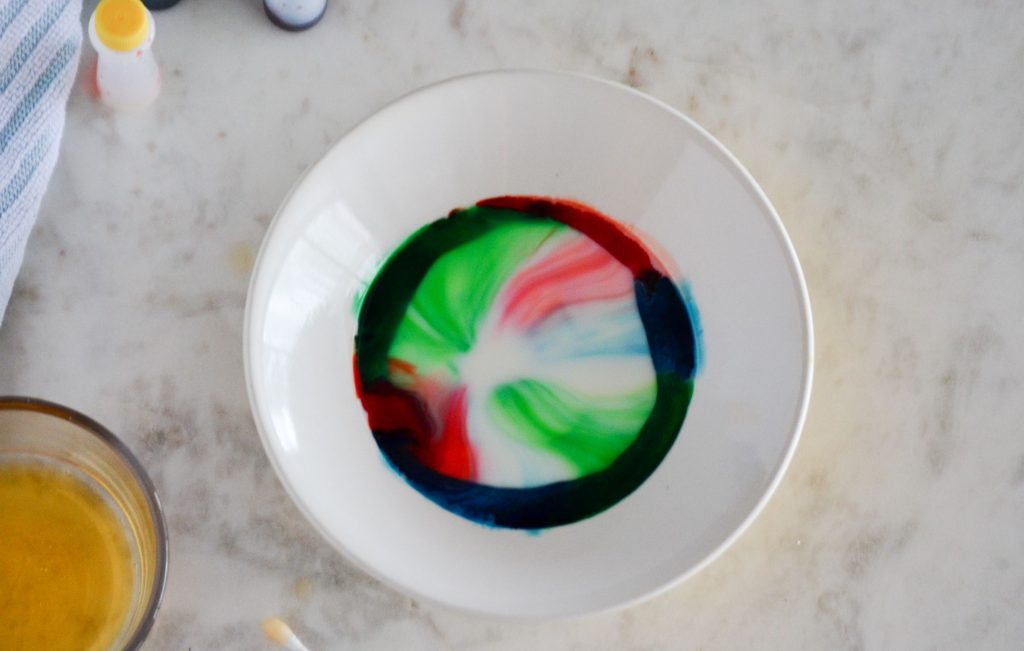
Kitchens aren’t just for parents and making meals!
Kids can use kitchen ingredients and tools to learn from kitchen science experiments. Check out the following ideas for fun kitchen science.
—–You can download our FREE ebook with 25 STEM Activities here——
Table of Contents
1. Rubber Egg Experiment
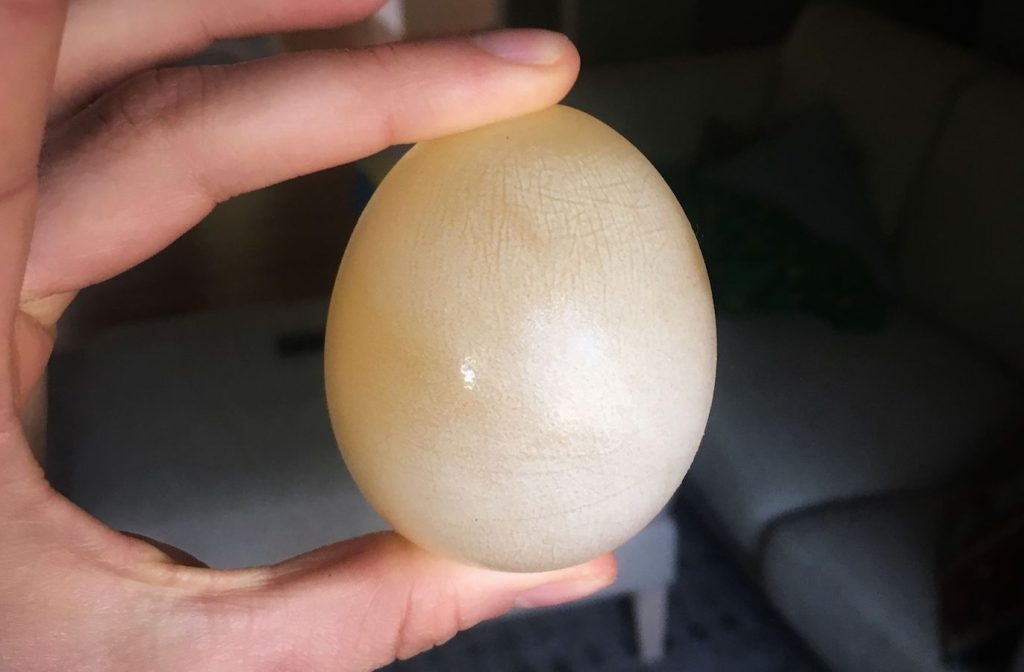
- White vinegar
- Glass or jar
Cover an egg in a container with vinegar to see the shell disappear and the resulting egg that feels like rubber. Children learn about the chemical reaction between the eggshell (calcium carbonate) and the vinegar (acetic acid). Bubbles on the egg and on top of the water are from carbon dioxide.
2. Shaking for Butter
- Heavy whipping cream
- Jar with lid
- Sealable plastic bags
Using heavy whipping cream at various temperatures, kids shake the cream in a jar to observe changes in color and texture. They learn about emulsification and the butter-making process of churning, in which cream is agitated and fat particles begin clumping together. They can see whipped cream form first, followed by butter, when the air is no longer held by the cream.
3. Bread in a Bag
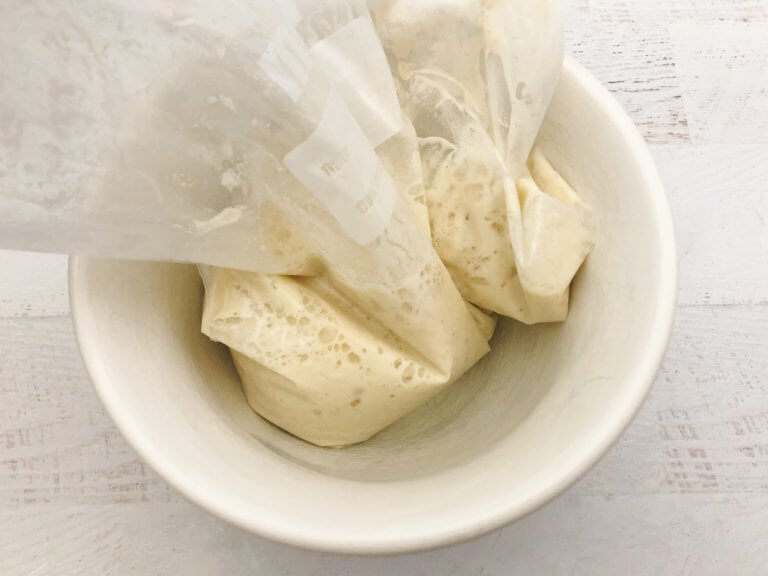
- Plain flour
- Granulated sugar
- Rapid rise yeast
Your children mix ingredients to make dough in the plastic bag, then knead the dough to bake. They discover how yeast is a dormant fungus that can be awakened with warm water and sugar as a food source for fermentation. Children also observe bubbles that form when the yeast eats the sugar and gives off carbon dioxide.
4. Growing Plants from Food Scraps
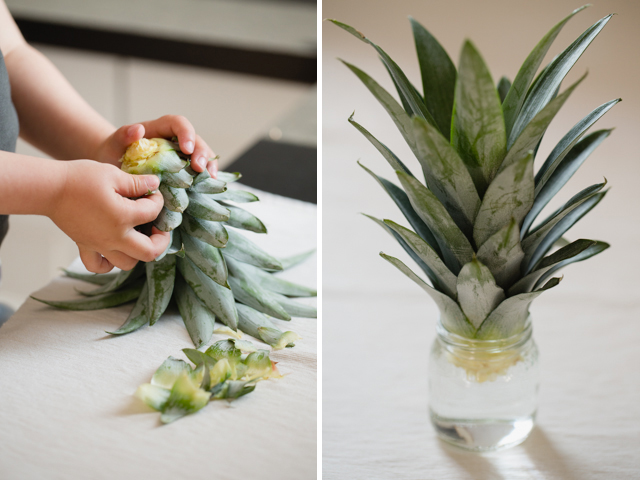
- Pineapple top
- Green onion white root sections
- Avocado pit
- Wide-mouthed, clear jars or glasses
Kids poke toothpicks into a pineapple top and avocado pit and prop over jars filled with water, while the white (root) ends of the onions are placed directly in water. They can see how roots grow on the pineapple and avocado and how the green ends of the onions poke from the top as the roots in the water continue to grow.
5. Lemon Volcano
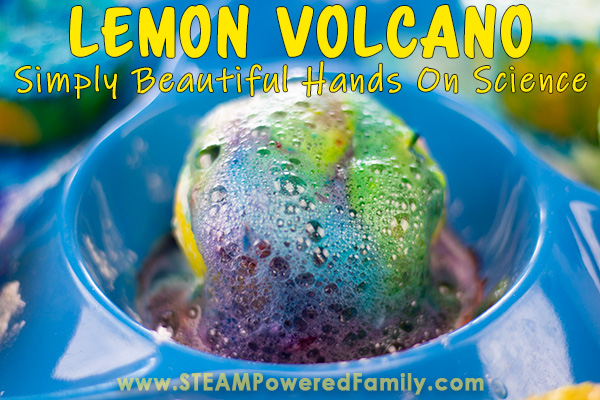
- Craft sticks
- Food coloring
- Baking soda
Your kids place cut lemons in the bowl with dish soap, food coloring, and baking soda poked in with craft sticks. They observe the reaction between the acid (lemon) and base (baking soda). Carbon dioxide is released and appears in the bubbles, made even more visible with the help of the dish soap that captures the gas.
6. Rock Candy
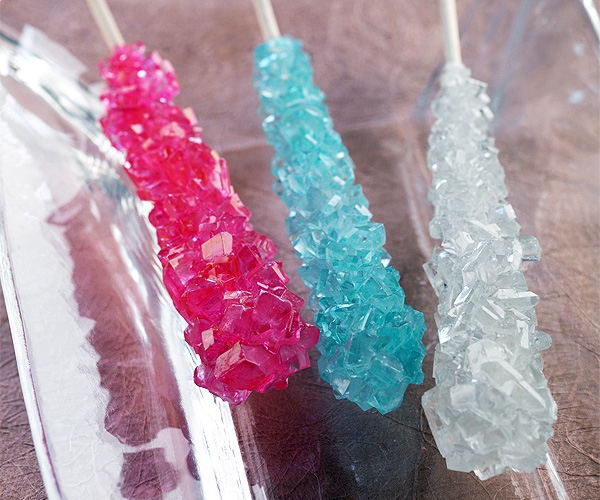
- Bamboo skewers or wooden sticks
- Large glass jar
Children squirt colors into the water you’ve heated and added sugar to melt. They roll moistened sticks in dry sugar to make the seed crystals, then place those in the jar of the cooled mixture. See how a saturated solution allows the sugar molecules to bump into each other and start sticking together.
7. Baked Potato Science
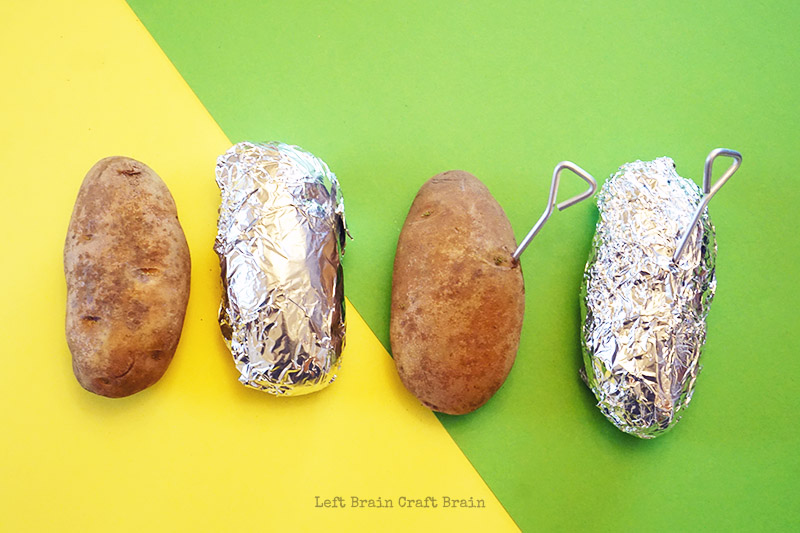
- Large potatoes
- Plastic wrap
- Baked potato pins
Kids predict which method of cooking a potato will be the fastest in the regular oven: plain potato, in foil, with baking pin, in foil with baking pin OR in the microwave plain or in plastic wrap. They explore how the wrappings may hold heat within to steam, whether the pin helps heat enter the potato sooner, and if a microwave is faster than a traditional oven.
8. Magic Milk

- Milk (whole or 2%)
- Cotton swabs
Your children squeeze colors into a shallow dish of milk and then touch the milk with a swab soaked with dish soap, to see the various colors of milk shoot away from each other. They learn that fat in milk is a nonpolar molecule, which doesn’t dissolve in water. The soap makes the fat separates from the water.
9. Solar S’Mores
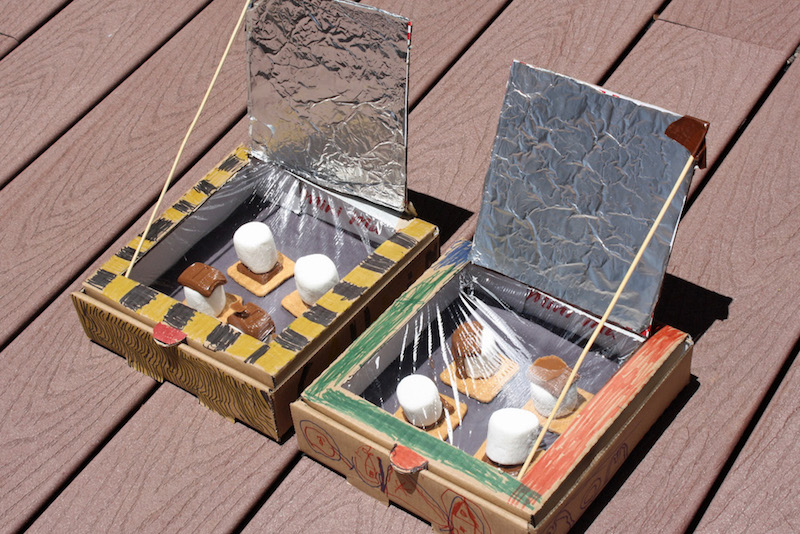
- Small, low boxes, such as pizza boxes
- Black construction paper
- Foil & plastic wrap
- Long wooden skewers
- Graham crackers
- Marshmallows
- Chocolate bars
Kids make their own solar ovens with the first 4 items and then build s’mores with the food ingredients. On a sunny day, they observe the effects of solar energy to melt the chocolate and make the marshmallows puff. Discuss the purpose of the foil (reflection) black paper (heat absorption) and plastic wrap (heat retention).
10. Walking Water
- Test tubes with rack OR clear plastic cups/jars
- Paper towels cut into thin strips
Children add water and different colors to the containers and stir, then place the paper towel strips into the containers, with two ends in each. They can see how the colored water “walks” through the fibers and spreads to meet and mix. This is a capillary action, which is the same way that plants, such as celery, take in water.
11. Cake Experiment
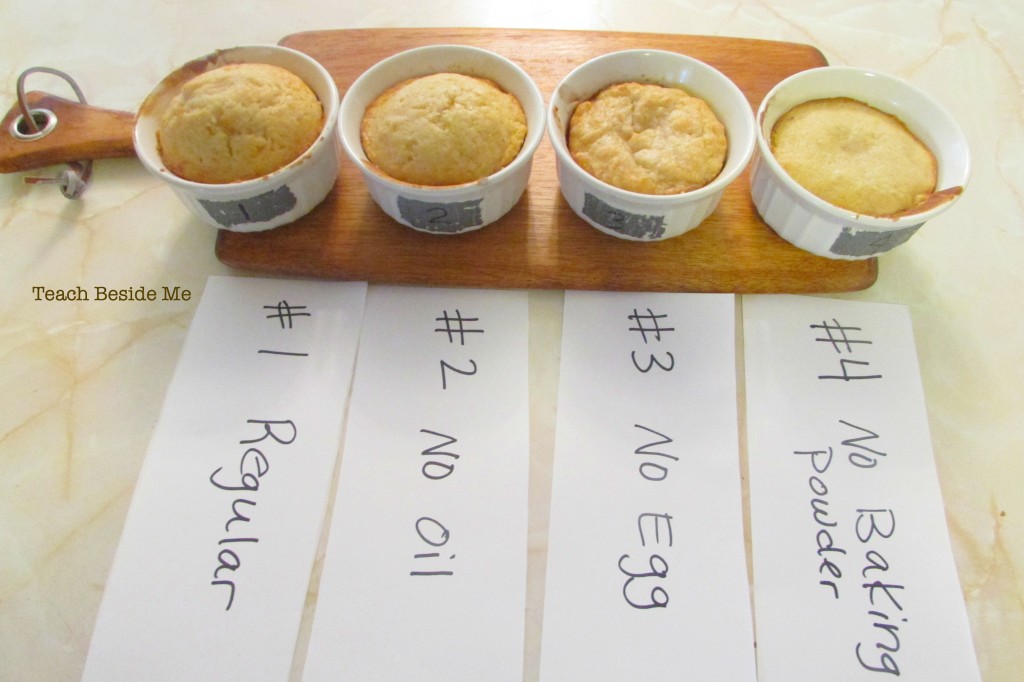
- Baking powder
- Cooking oil
- Ramekins OR other small baking dishes
Bake four different cakes with the kids, leaving one important ingredient out of three: oil, egg, or baking powder. Kids predict the various effects in looks and flavor related to each missing ingredient. They learn that eggs add color, flavor, and structure; oil adds moisture and tenderness; and baking powder makes the cakes rise with its release of carbon dioxide.
12. How Does Salt Affect Ice?
- 5 clean tin cans
- Coarse rock salt
- Measuring spoons
- Digital thermometer (no-contact type)
Have children add the same number of ice cubes to each can and then add a teaspoon or 2 tablespoons of either table salt or rock salt into each, shaking them a bit to spread the salt. They observe condensation on the bottoms of the cans as the reactions begin. Help them take temperature readings to compare the effects in each can.
13. Sandwich Bag Compost
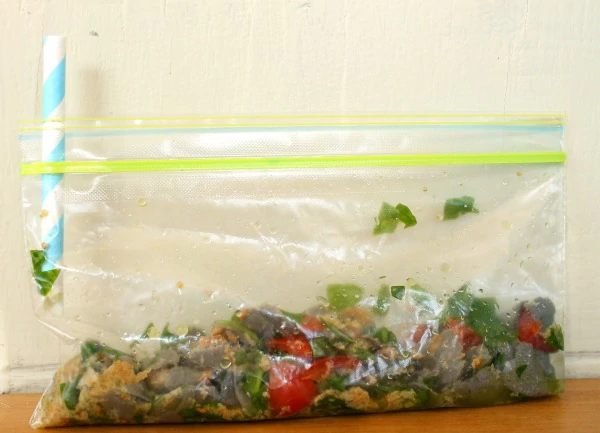
- Food waste in small pieces (veggies are best)
- Cardboard egg carton pieces
- Sandwich bags
Kids add the first two items with a bit of water to individual bags with the tops zipped most of the way and a straw inserted into a gap for air. Mush it up a bit each day and add more water, if needed for moisture. They observe on a small scale how composting turns food waste into soil.
14. Explore the Density of Liquids with Salt
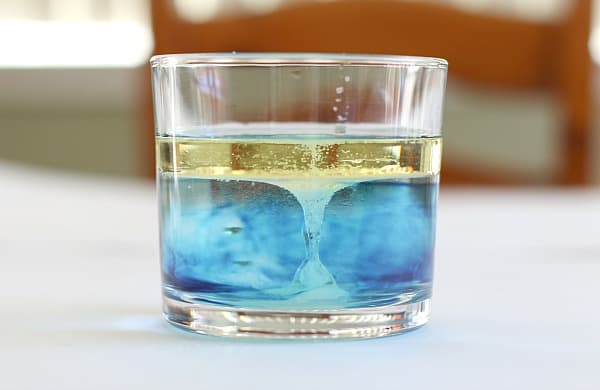
- Clear glass
- Vegetable oil
Children pour oil into water to observe what happens, adding a drop of color on top, followed by larger and larger sprinkles of salt. They offer ideas of why the various movements take place. They learn water is denser than oil and salt are denser than the liquids.
15. Ice Cream in a Bag
- Small zipper sandwich bag
- Gallon-sized zipper bag
In the small zipper bag, your child adds the first 3 ingredients and zips closed. Add salt and ice to the large bag and place the small bag inside the larger one and seal. They shake to make ice cream! Children can learn that salt (sodium chloride) lowers the freezing point of water so it can become even colder .
These kitchen science experiments are easy and require little planning! They’re great activities to learn the scientific method and for some of these food experiments, you can enjoy a tasty treat afterward too!
1 thought on “15 Easy Kitchen Science Experiments (With Ingredients You Already Have)”
Krystal, once again felt like I was back in a simpler time of my youth. That’s when I first saw some of these golden oldies in science class at school. Arthur B
Leave a Comment Cancel reply
Save my name, email, and website in this browser for the next time I comment.
most recent
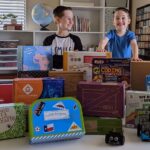
Activities and Games , Toy Gift Guides
Best stem subscription boxes for kids: hands-on reviews.

STEM Holiday Deals , Activities and Games , Science , Toy Gift Guides
How to choose a stem toy for every age kid.
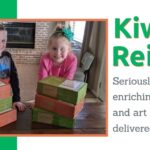
Product Reviews
Kiwico review: everything inside the crates (plus, 30% off coupon code).
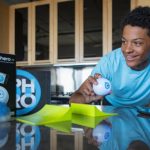
STEM Holiday Deals , Product Reviews
Best black friday deals for sphero.
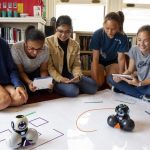
STEM Holiday Deals
Wonder workshop black friday deals (complete list of where and what to buy).
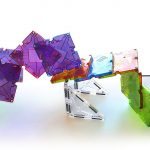
Product Reviews , Toy Gift Guides
Magna-tiles black friday deals: 2024.
STEM Education Guide
[email protected] STEM Education Guide 9125 SVL BOX Victorville, CA 92395
Your Compass for STEM Discovery
© 2024 STEM Education Guide
- Skip to primary navigation
- Skip to main content
- Skip to primary sidebar

- FREE Experiments
- Kitchen Science
- Climate Change
Egg Experiments
- Fairy Tale Science
- Edible Science
- Human Health
- Inspirational Women
- Forces and Motion
- Science Fair Projects
- STEM Challenges
- Science Sparks Books
- Contact Science Sparks
- Science Resources for Home and School
50 Kitchen Science Experiments for Kids
March 11, 2021 By Emma Vanstone 7 Comments
The kitchen is a great place to explore science with children . Even something as simple as melting chocolate is a great science experiment . You can cook, bake, set up a sensory activity, create science magic , make lava lamps and volcanoes, or even play with ice. The creative opportunities with this collection of kitchen science experiments are endless!
The best thing about science in the kitchen is that you probably already have everything you need!
Kitchen Science Experiments for Kids
There are so many different things you can do with eggs. Learn about strong shapes, dissolve the shell in vinegar, transform egg white into meringue and make an egg float with these awesome egg experiments .
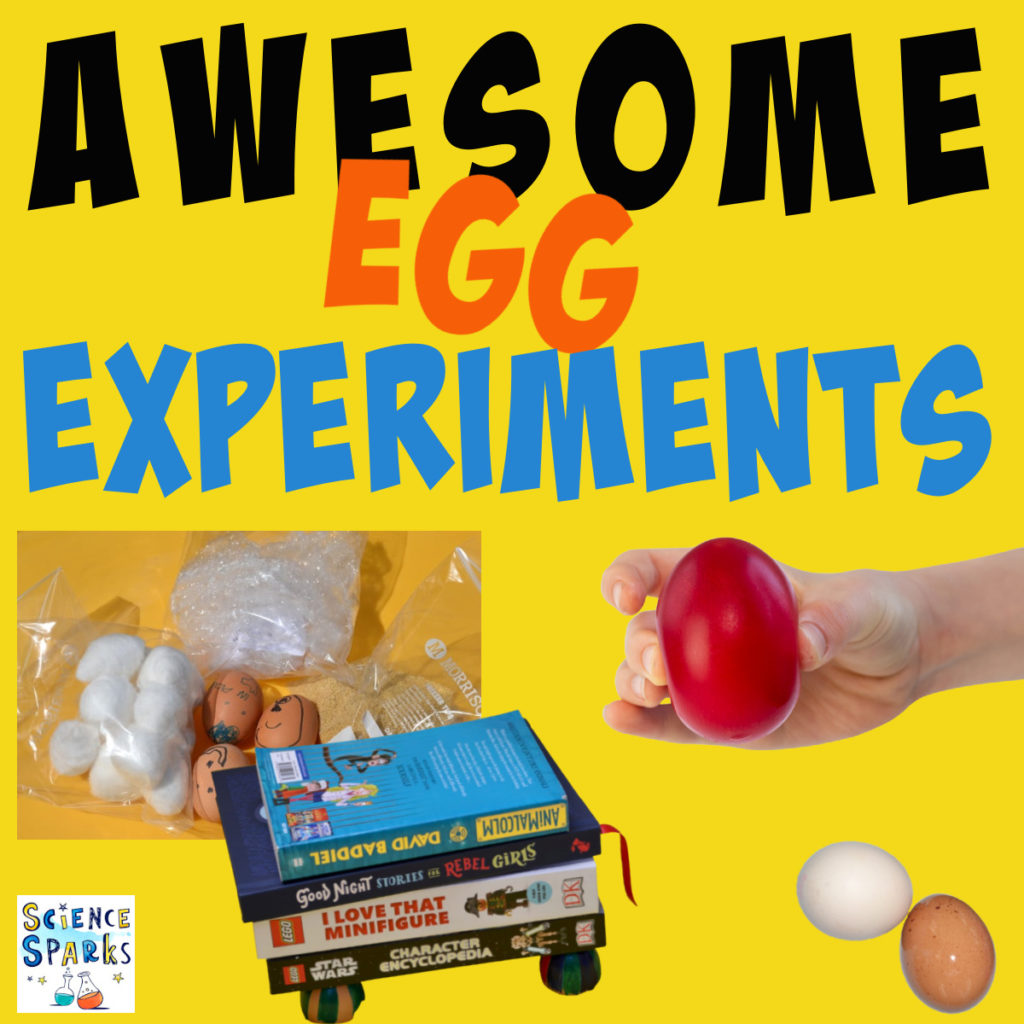
Kitchen Science for Preschoolers
My preschooler loves gloop or oobleck; if you’ve never made it before, you must try it. The cornflour ( cornstarch ) and water mixture feels solid if you squeeze it but turns into a liquid when the pressure is released.
Use eggs to learn about tooth decay .
This density experiment will impress everyone. Finding a small object to balance on each layer is an extra fun challenge.
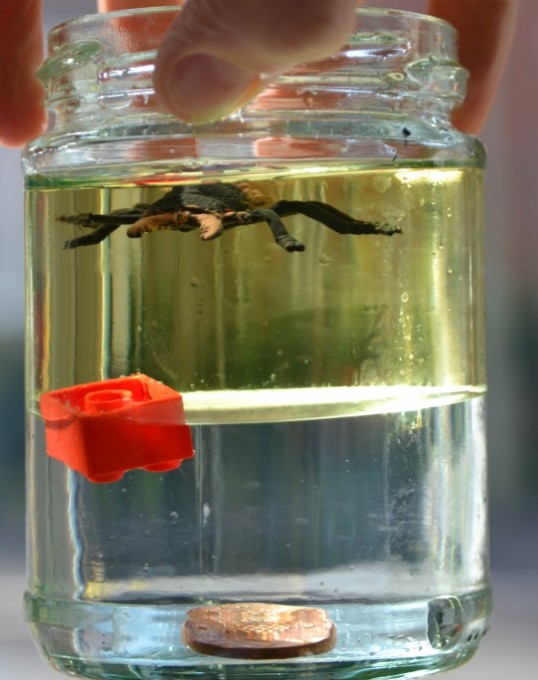
Sweet Treats
Create a Bake Off worthy masterpiece with the Science Sparks Bake off ! Find out why honeycomb has bubbles, why cakes turn brown and more!
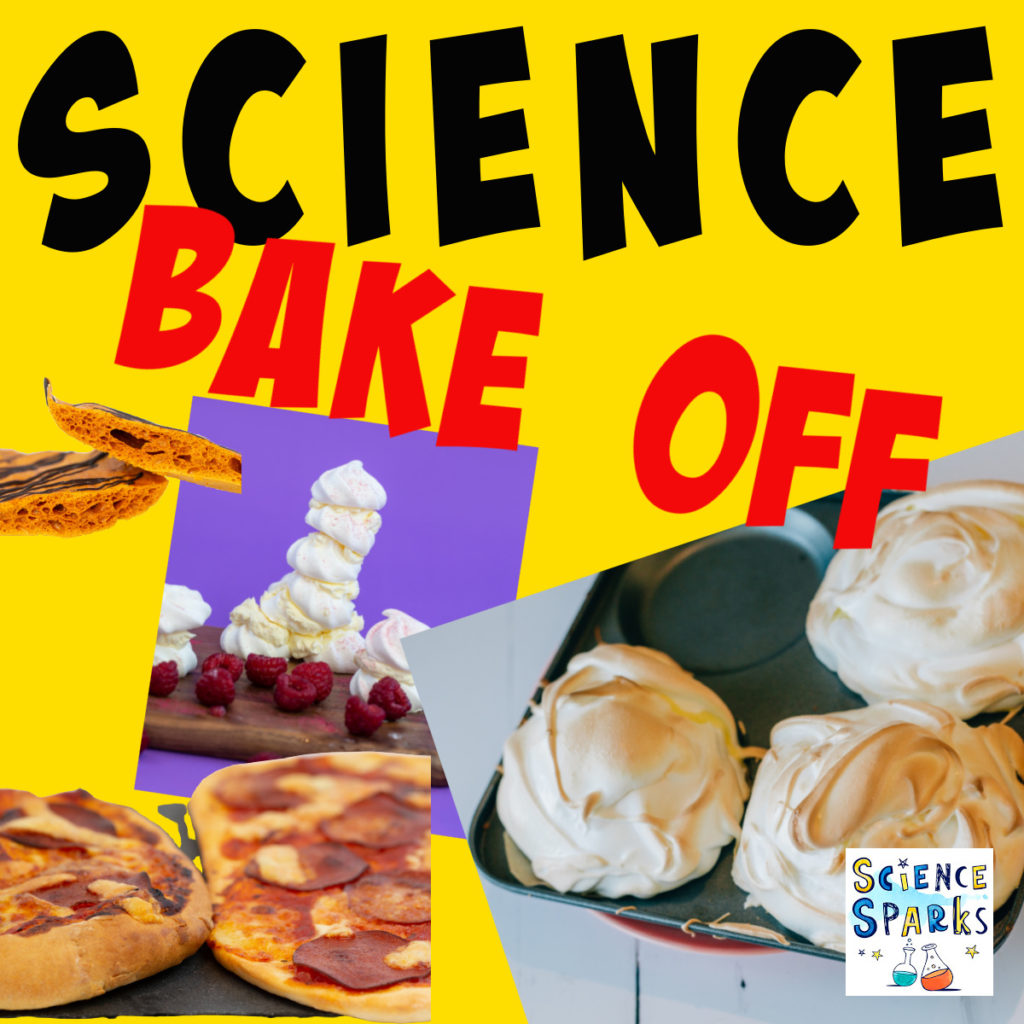
Can you believe meringue is made from sugar and egg white? Little scientists can transform egg white into a lovely sweet treat .
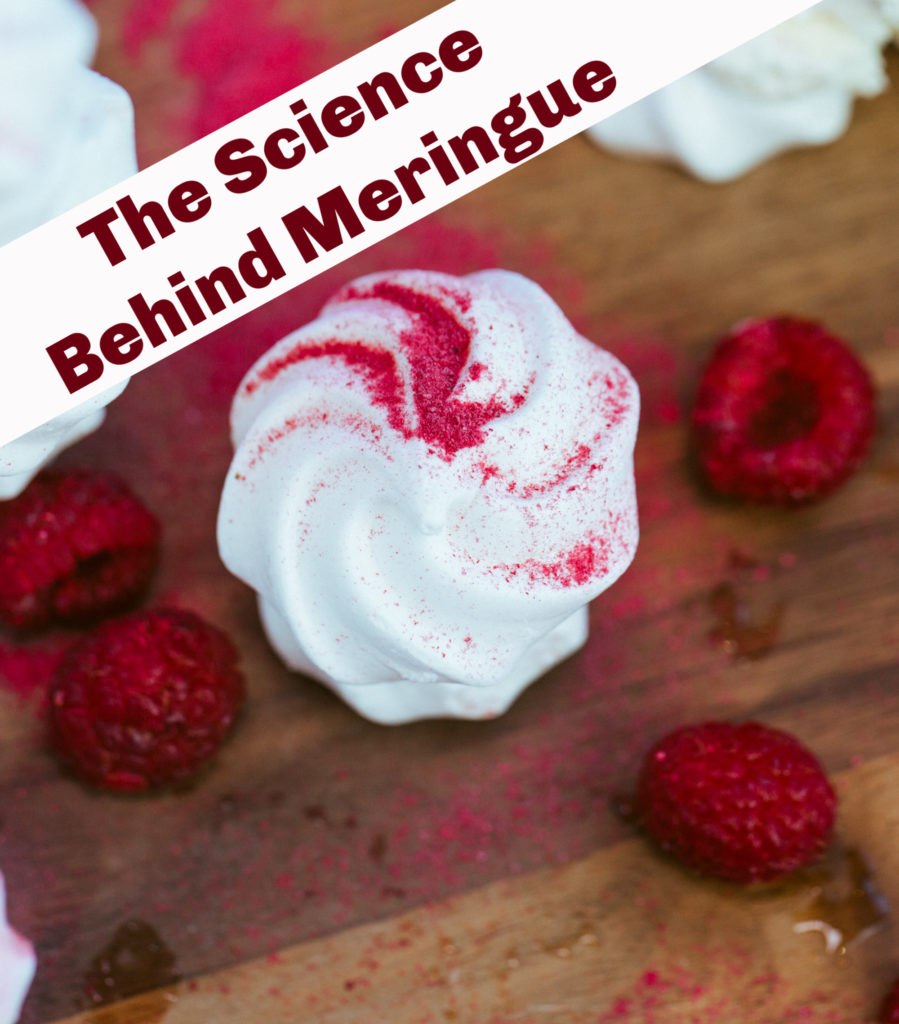
Discover the power of baking soda by making pancakes!
Making treacle toffee is a great activity for learning about changes of state as the sugar melts and then becomes solid again. Be very careful with the hot mixture, though.
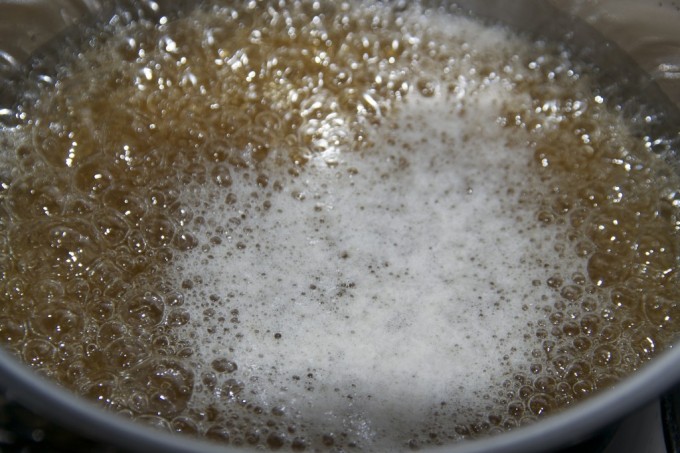
Try some colour mixing with jelly . This is great fun, and you end up with a fun dessert after the investigation.
Grow some sugar crystals and make a lolly.
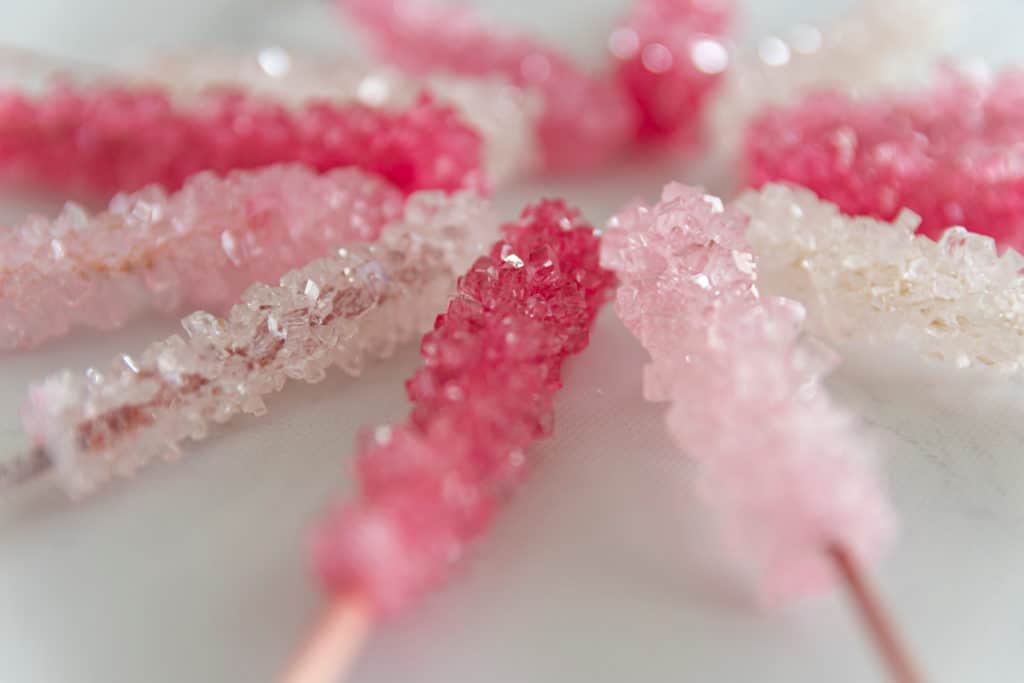
Find out why popping candy pops or try one of these other candy experiments kids will love !
Savoury Kitchen Science
Make a pizza to learn about respiration and yeast. Breadmaking is another fun activity to see yeast in action .
Make a baked Alaska to find out how to put ice cream in the oven without it melting.
Make some yummy honeycomb and discover why it has holes.
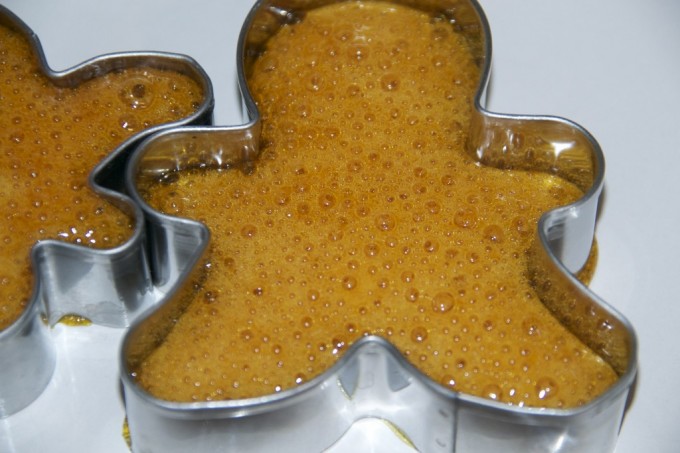
Can you make your butter from cream?
This activity is excellent for learning about colloids. It takes a bit of time and some energy, but the end result is worth it.
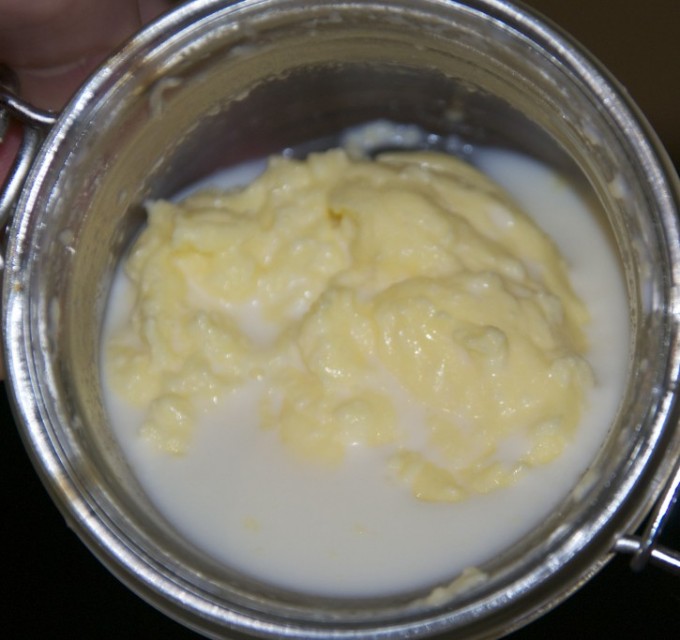
Food and Diet Activities
Find out about food groups with this fun activity.
Discover how much sugar common drinks contain .
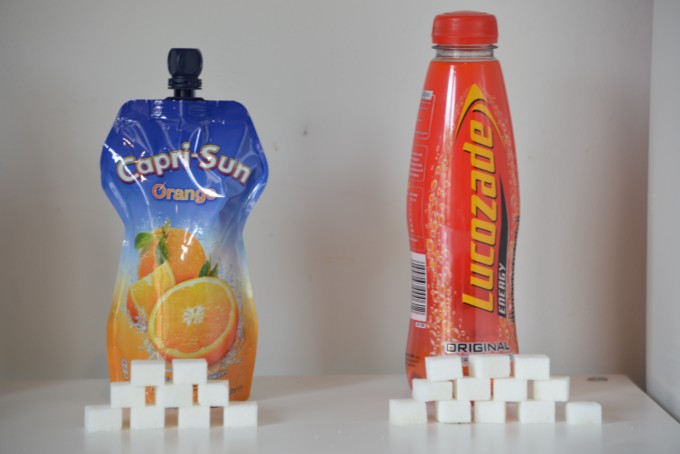
We’ve also recently used hula hoops to group foods into healthy and unhealthy.
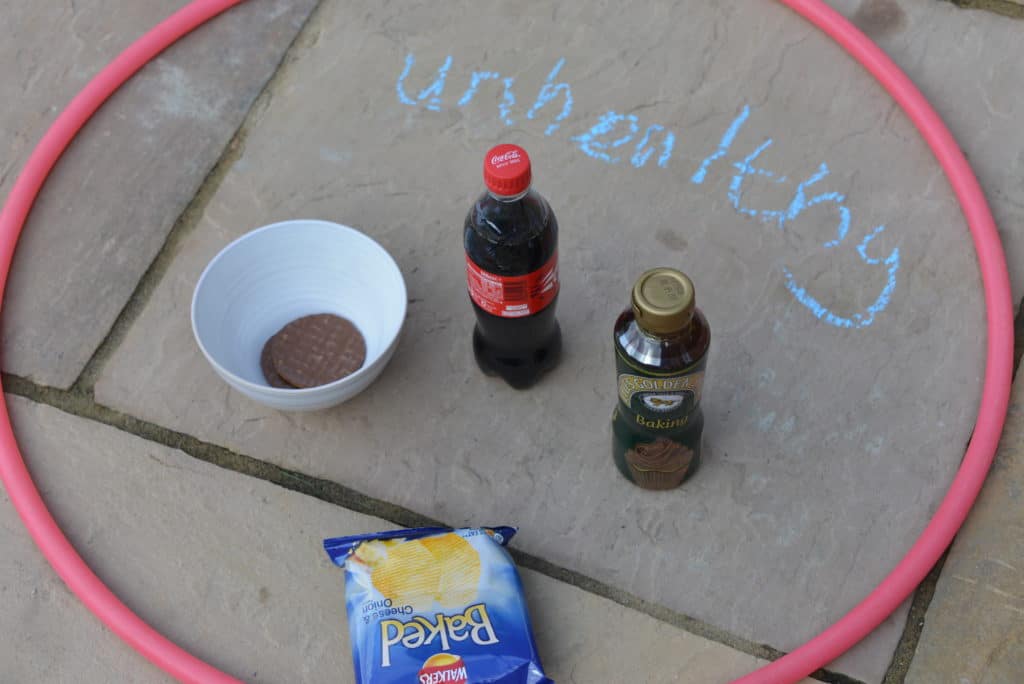
Milk Based Experiments
Do you know why milk curdles ?
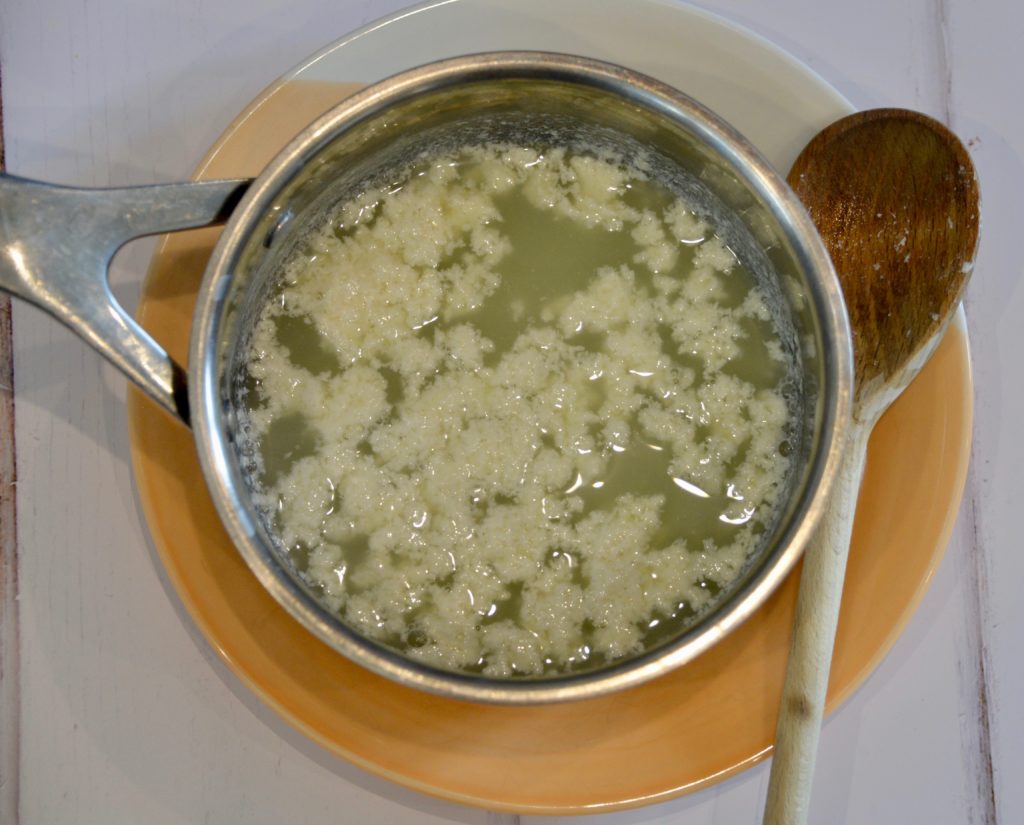
Did you know you can make glue from milk which actually sticks!!
This one is not so appetising, but still fun. Find out why apples rot .
Using kitchen equipment
Get imaginative with some candy mixtures
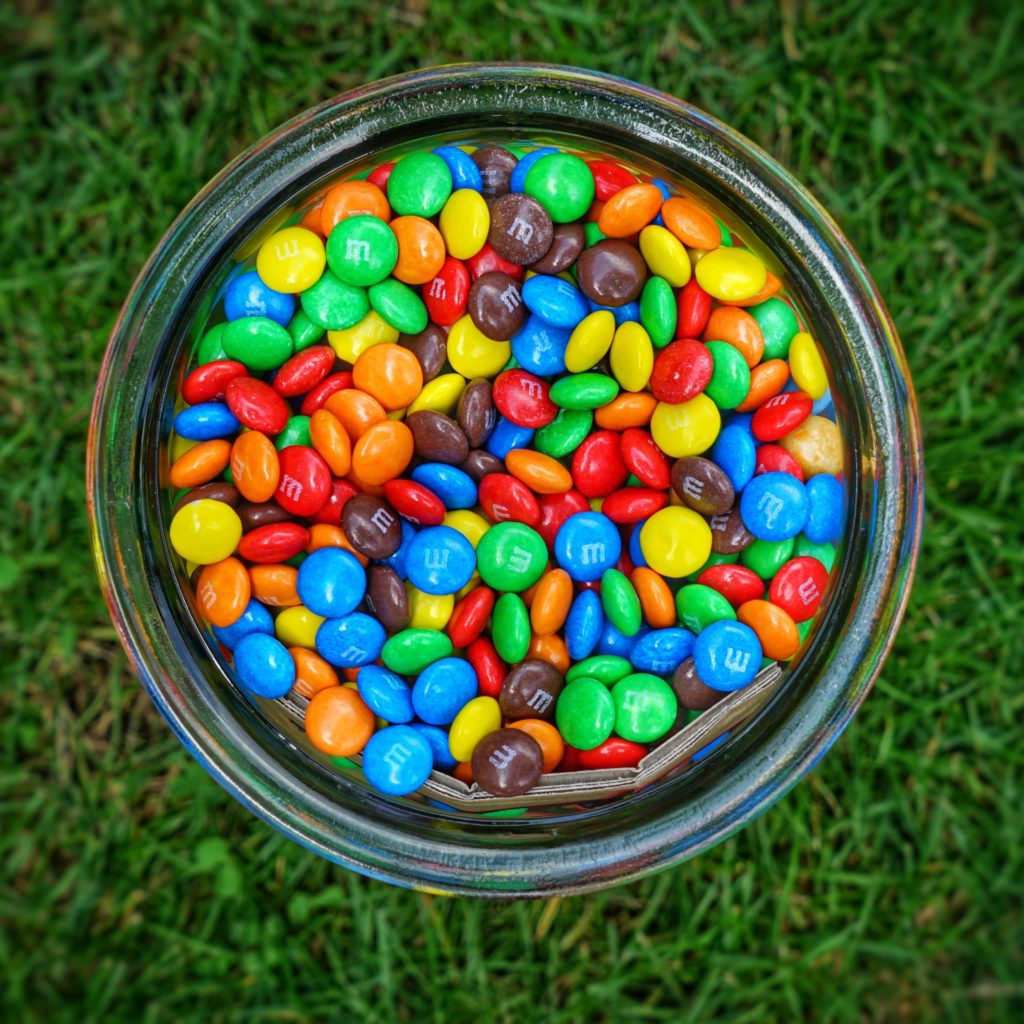
Pull out the kitchen scales and try some weighing and measuring .
More scientific principles
Sugar cubes and absorption.
Explore absorption with sugar cubes and coloured water; this is a great way to learn about the properties of materials in the kitchen!
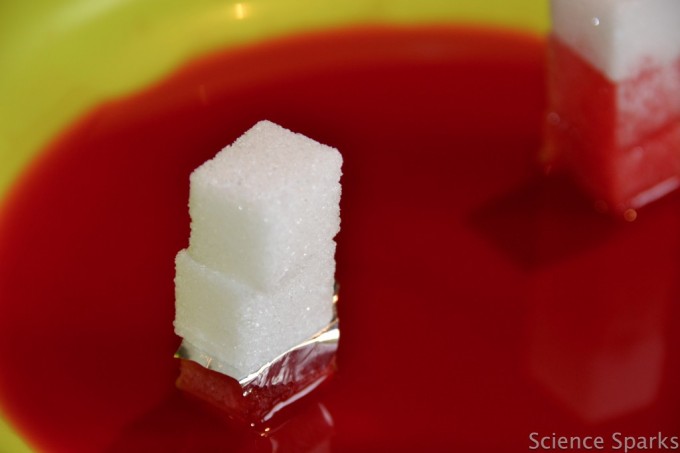
Filter water
Learn about filtering by cleaning up dirty water with a filter.
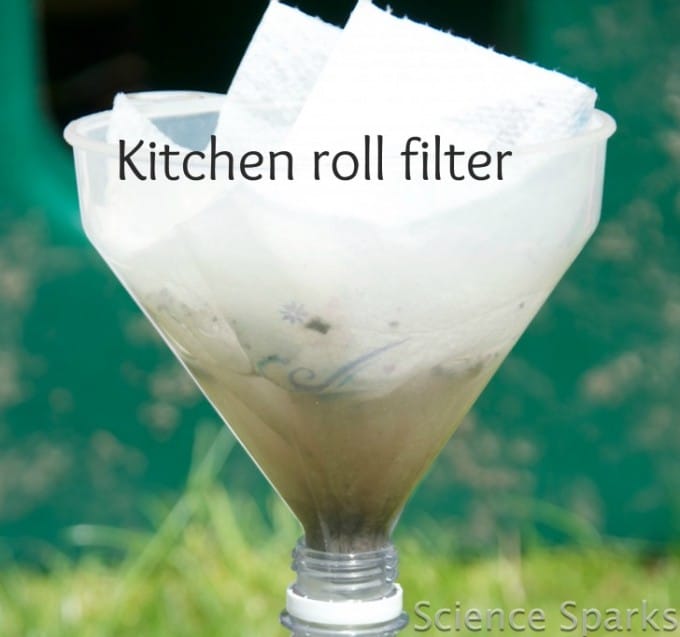
Make a firework in a glass to discover why oil and water don’t mix.
Make an indicator with red cabbage.
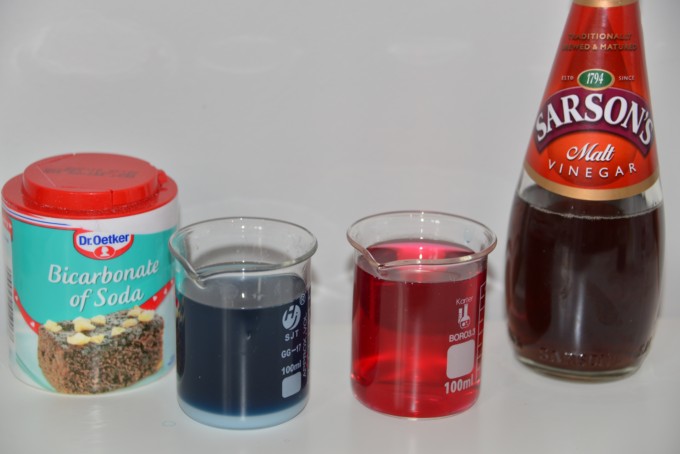
Create a pretty milk display to learn about emulsions .
Discover how to make a lemon sink
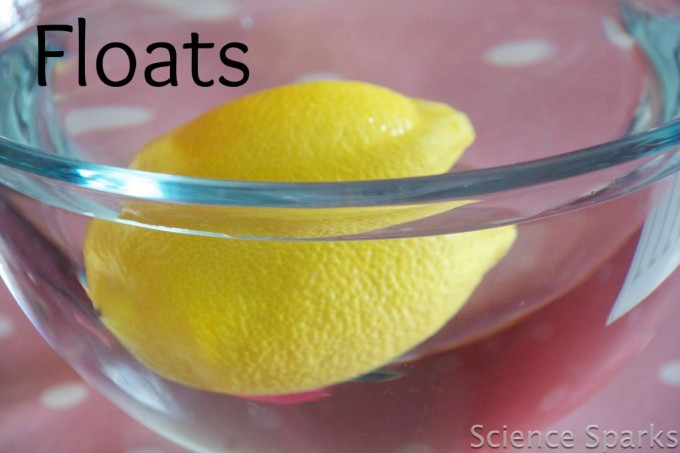
Chemical Reactions
Dancing raisins.
Can you make raisins dance ? It might be easier than you think!
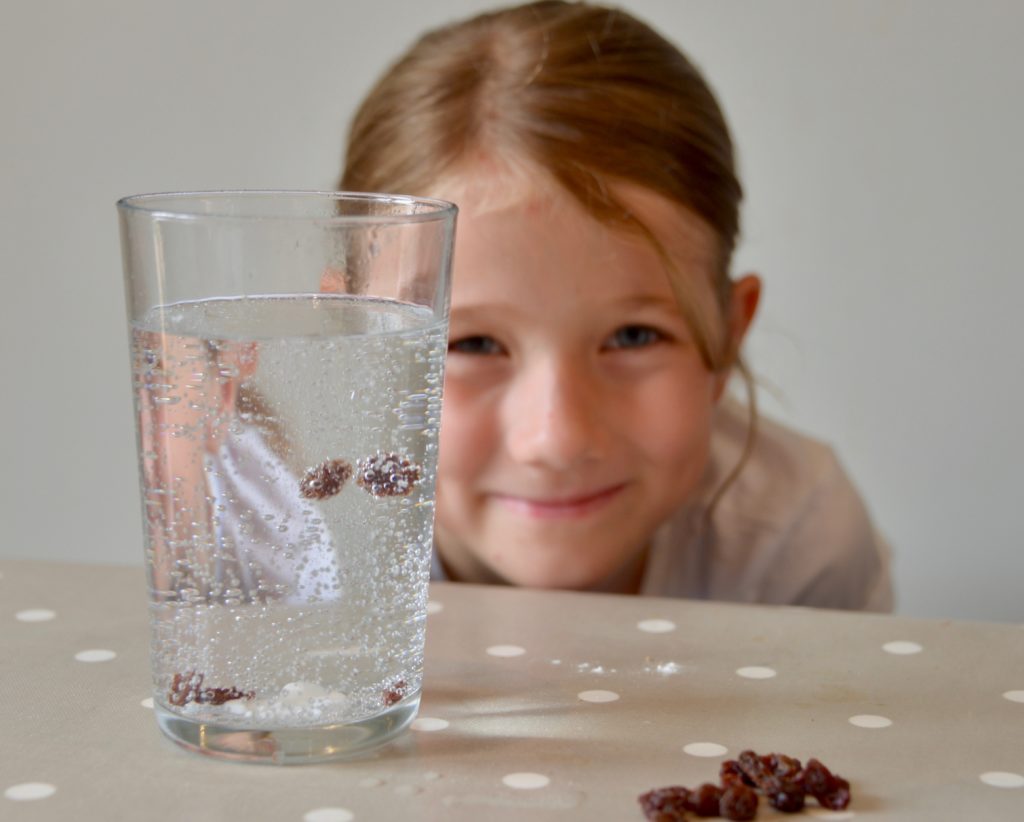
Fizzing baking soda rocks
These fizzing rocks are a big favourite in our house. You could even add some plastic bugs to give an added twist.
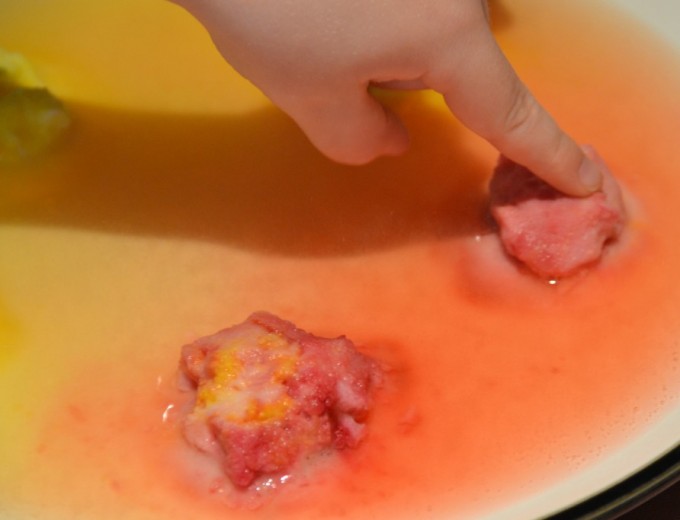
Blow up a balloon with yeast.
Explore yeast and respiration by blowing up a balloon . Other things to try include baking soda and vinegar, or even popping candy and water!
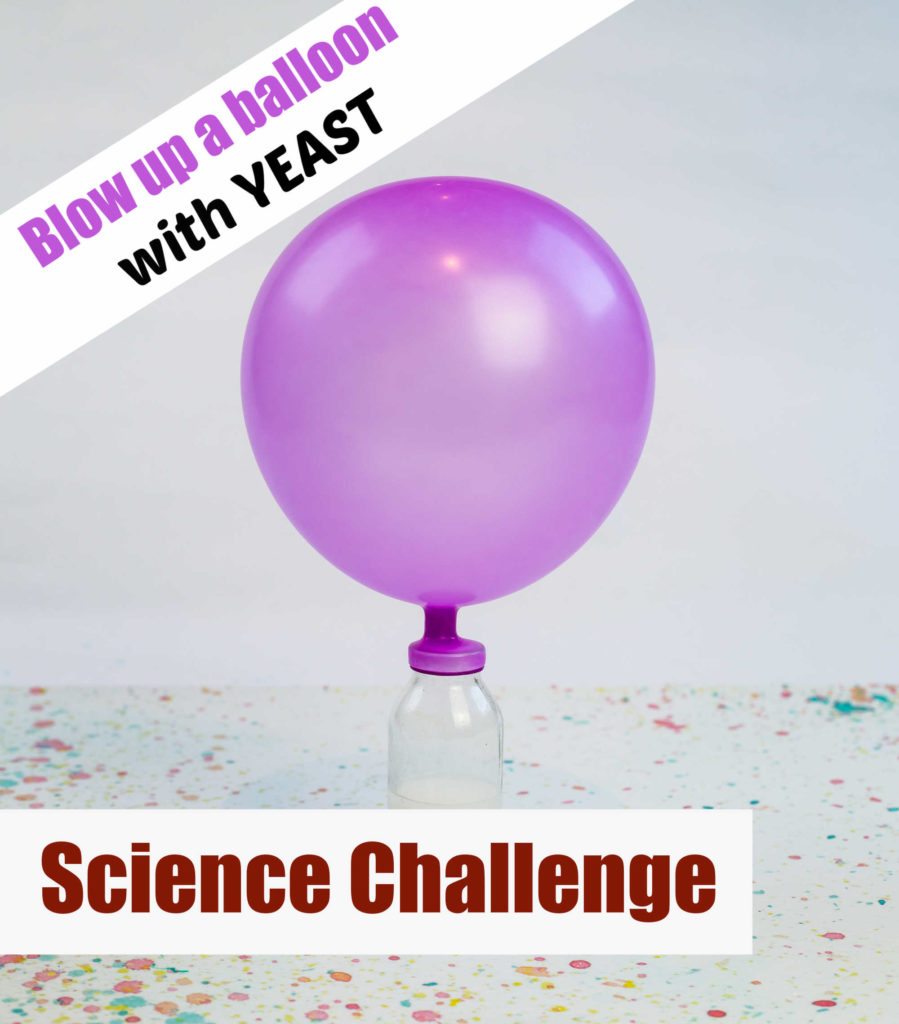
You could also learn how to blow up a balloon with lemon juice .
Baking Soda Volcano
Finally, how about our old favourite, the infamous baking soda volcano ?
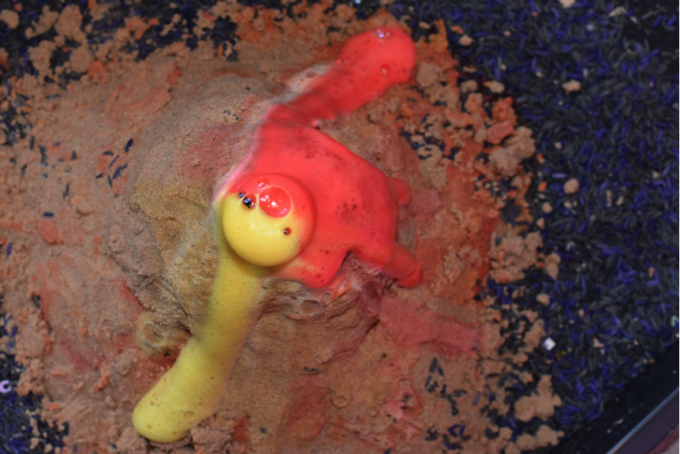
What do you think? Can you think of any more kitchen science experiments for us?
Kitchen Science Challenge
Can you assemble a whole meal demonstrating a different science concept with every course?
Snackable Science
I’ve mentioned it a few times, but did you know I have a new book? Snackable Science is jam-packed full of exciting edible experiments for kids of all ages!
I’m so pleased with how it turned out, so I hope you enjoy reading it as much as I enjoyed writing it.
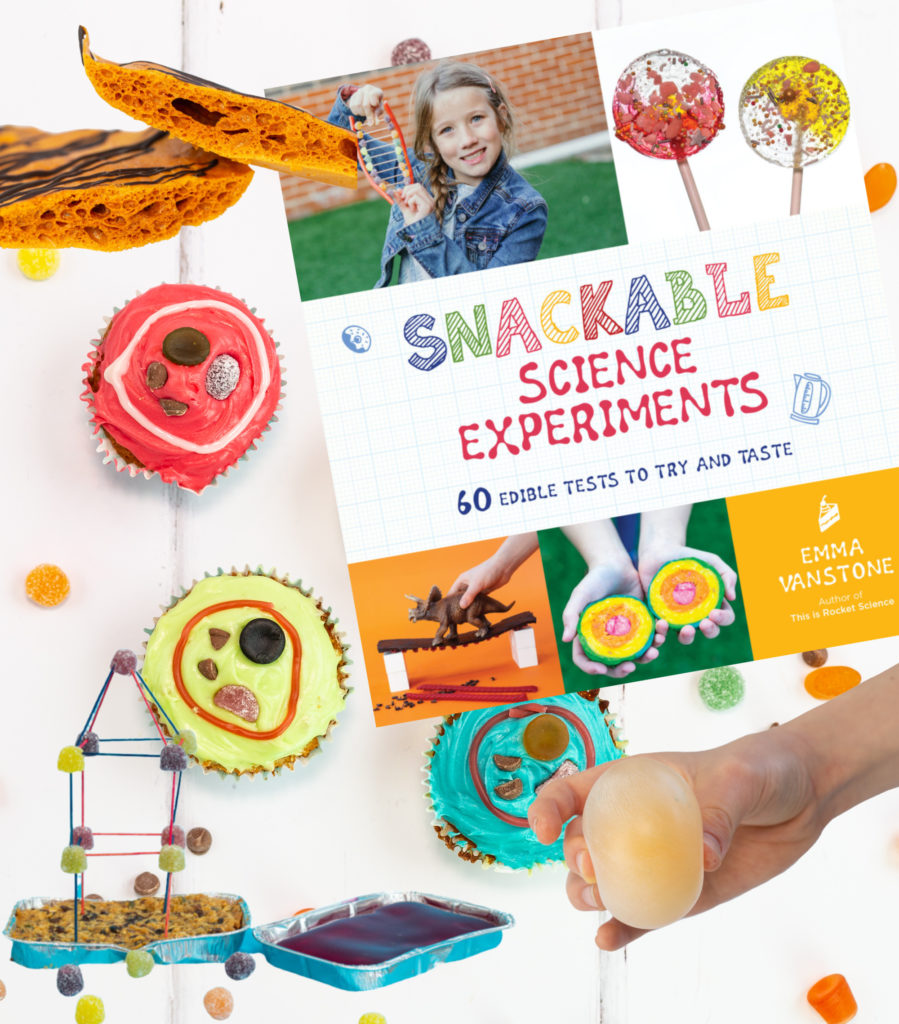
Last Updated on February 21, 2023 by Emma Vanstone
Safety Notice
Science Sparks ( Wild Sparks Enterprises Ltd ) are not liable for the actions of activity of any person who uses the information in this resource or in any of the suggested further resources. Science Sparks assume no liability with regard to injuries or damage to property that may occur as a result of using the information and carrying out the practical activities contained in this resource or in any of the suggested further resources.
These activities are designed to be carried out by children working with a parent, guardian or other appropriate adult. The adult involved is fully responsible for ensuring that the activities are carried out safely.
Reader Interactions
April 29, 2013 at 8:42 am
I have only discovered you today. It is wonderful that someone else uses everyday science fun activities. I am a retired science teacher, and my grandchildren all love doing experiments.
April 29, 2013 at 6:33 pm
Thank you so much, that is lovely to hear. Do let me know if you have any ideas for us 🙂
April 30, 2013 at 1:48 pm
Pinned this! Thanks for the great ideas. Monica Join us for Family Fun Friday. Share your posts with 100+ bloggers and 400+ readers. http://happyandblessedhome.com/category/family-fun/
May 07, 2013 at 2:28 pm
What a great collection! Just dropping by to let you know I am featuring this in Tuesday Tots this week!
May 08, 2013 at 5:18 am
What a great collection of simple science fun!!! Thanks for sharing at For the Kids Friday! I am featuring THIS post at this week’s party! Love having you share with us at SunScholars!
May 10, 2013 at 9:16 pm
we love food fun in the kitchen. Hope you share some of these on our #kidsinthekitchen linky this week http://lookwhatmomfound.com/2013/05/homemade-versus-store-bought-kidsinthekitchen.html
June 06, 2014 at 9:35 pm
Hi, will you be publishing a book? I am looking for an inspiring book on science experiments for kids
Leave a Reply Cancel reply
Your email address will not be published. Required fields are marked *
- Science, Tech, Math ›
- Chemistry ›
- Activities for Kids ›
Kitchen Science Experiments for Kids
- Activities for Kids
- Chemical Laws
- Periodic Table
- Projects & Experiments
- Scientific Method
- Biochemistry
- Physical Chemistry
- Medical Chemistry
- Chemistry In Everyday Life
- Famous Chemists
- Abbreviations & Acronyms
- Weather & Climate
- Ph.D., Biomedical Sciences, University of Tennessee at Knoxville
- B.A., Physics and Mathematics, Hastings College
Not all science requires expensive and hard to find chemicals or fancy laboratories. You can explore the fun of science in your own kitchen. Here are some science experiments and projects you can do that use common kitchen chemicals.
Click through the images for a collection of easy kitchen science experiments, along with a list of the ingredients you will need for each project.
Rainbow Density Column Kitchen Chemistry
Make a rainbow-colored liquid density column. This project is very pretty, plus it's safe enough to drink. Experiment Materials: sugar, water, food coloring, a glass
Baking Soda and Vinegar Volcano Kitchen Experiment
This is the classic science fair demonstration in which you simulate a volcanic eruption using kitchen chemicals. Experiment Materials: baking soda, vinegar, water, detergent, food coloring and either a bottle or else you can build a dough volcano.
Invisible Ink Experiments Using Kitchen Chemicals
Write a secret message, which becomes invisible when the paper is dry. Reveal the secret! Experiment Materials: paper and just about any chemical in your house
Make Rock Candy Crystals Using Ordinary Sugar
Grow edible rock candy or sugar crystals. You can make them any color you want. Experiment Materials: sugar, water, food coloring, a glass, a string or stick
Make pH Indicator in your Ktchen
Make your own pH indicator solution from red cabbage or another pH-sensitive food then use the indicator solution to experiment with the acidity of common household chemicals. Experiment Materials: red cabbage
Make Oobleck Slime in the Kitchen
Oobleck is an interesting type of slime with properties of both solids and liquids. It normally behaves like a liquid or jelly, but if you squeeze it in your hand, it will seem like a solid. Experiment Materials: cornstarch, water, food coloring (optional)
Make Rubber Eggs and Chicken Bones Using Household Ingredients
Turn a raw egg in its shell into a soft and rubbery egg. If you're daring you even bounce these eggs as balls. The same principle can be used to make rubber chicken bones. Experiment Materials: egg or chicken bones, vinegar
Make Water Fireworks in a Glass from Water and Dye
Don't worry - there is no explosion or danger involved in this project! The 'fireworks' take place in a glass of water. You can learn about diffusion and liquids. Experiment Materials: water, oil, food coloring
Magic Colored Milk Experiment Using Kitchen Chemicals
Nothing happens if you add food coloring to milk, but it only takes one simple ingredient to turn the milk into a swirling color wheel. Experiment Materials: milk, dishwashing liquid, food coloring
Make Ice Cream in a Plastic Bag in the Kitchen
You can learn how freezing point depression works while making a tasty treat. You don't need an ice cream maker to make this ice cream, just some ice. Experiment Materials: milk, cream, sugar, vanilla, ice, salt, baggies
Let Kids Make Glue from Milk
Do you need glue for a project, but just can't seem to find any? You can use kitchen ingredients to make your own. Experiment Materials: milk, baking soda, vinegar, water
Show Kids How To Make a Mentos Candy and Soda Fountain
Explore the science of bubbles and pressure using Mentos candies and a bottle of soda. As the candies dissolve in soda, the tiny pits formed on their surface allow carbon dioxide bubbles to grow. The process occurs quickly, producing a sudden burst of foam from the narrow neck of the bottle. Experiment Materials: Mentos candies, soda
Make Hot Ice Using Vinegar and Baking Soda
Getty Images
You can make 'hot ice' or sodium acetate at home using baking soda and vinegar and then cause it to instantly crystallize from a liquid in 'ice'. The reaction generates heat, so the ice is hot. It happens so quickly, you can form crystal towers as you pour the liquid into a dish. Note: The classic chemical volcano also produces sodium acetate, but there is too much water present for the hot ice to solidify! Experiment Materials: vinegar, baking soda
Fun Pepper and Water Science Experiment
Pepper floats on water. If you dip your finger into a water and pepper, nothing much happens. You can dip your finger into a common kitchen chemical first and get a dramatic result. Experiment Materials: pepper, water, dishwashing liquid
Cloud in a Bottle Science Experiment
Capture your own cloud in a plastic bottle. This experiment illustrates many principles of gases and phase changes. Experiment Materials: water, plastic bottle, match
Make Flubber from Kitchen Ingredients
Flubber is a non-sticky slime. It's easy to make and non-toxic. In fact, you can even eat it. Experiment Materials: Metamucil, water
Make a Ketchup Packet Cartesian Diver
Explore the concepts of density and buoyancy with this easy kitchen project. Experiment Materials: ketchup packet, water, plastic bottle
Easy Baking Soda Stalactites
You can grow baking soda crystals along a piece of string to make stalactites similar to those you might find in a cave. Experiment Materials: baking soda, water, string
Easy Egg in a Bottle Science Experiment
An egg doesn't fall into a bottle if you set it on top. Apply your science know-how to get the egg to drop inside. Experiment Materials: egg, bottle
More Kitchen Science Experiments To Try
Here are more fun and interesting kitchen science experiments you can try.
Candy Chromatography
Separate the pigments in colored candies using a saltwater solution and a coffee filter. Experiment Materials: colored candies, salt, water, coffee filter
Make Honeycomb Candy
Honeycomb candy is an easy-to-make candy that has an interesting texture caused by carbon dioxide bubbles that you cause to form and get trapped within the candy. Experiment Materials: sugar, baking soda, honey, water
Lemon Fizz Kitchen Science Experiment
This kitchen science project involves making a fizzy volcano using baking soda and lemon juice. Experiment Materials: lemon juice, baking soda, dishwashing liquid, food coloring
Powdered Olive Oil
This is a simple molecular gastronomy project to turn liquid olive oil into a powdered form that melts in your mouth. Experiment Materials: olive oil, maltodextrin
Alum Crystal
Alum is sold with spices. You can use it to grow a large, clear crystal or a mass of smaller ones overnight. Experiment Materials: alum, water
Supercool Water
Make water freeze on command. There are two easy methods you can try. Experiment Materials: bottle of water
Edible Water Bottle
Make a ball of water with an edible shell.
This content is provided in partnership with National 4-H Council. 4-H science programs provide youth the opportunity to learn about STEM through fun, hands-on activities, and projects. Learn more by visiting their website .
- Safe Science Experiments
- Science Experiments and Activities for Preschoolers
- Easy Chemistry Experiments to Do at Home
- Easy Science Projects
- Science Projects Photo Gallery
- Second Grade Science Fair Projects
- Melting Ice Science Experiment
- Top Chemistry Projects for Bored Kids
- Modeling Clay Recipes Using Home Ingredients
- Edible Slime Recipes
- Mad Scientist Halloween Costumes
- Middle School Science Experiments
- Mad Scientist Party Theme
- 18+ Slime Recipes
- Frankenworms Dancing Gummy Worms Science Experiment
- Fluorescent Light Science Experiment
Babble Dabble Do

30 Simple Kitchen Science Experiments for Curious Kids
February 13, 2022 by Ana Dziengel 2 Comments
Try these simple kitchen science experiments that utilize basic materials from the pantry! Yes, science for kids is THAT easy.
Of all the science secrets I have learned over the years, utilizing my pantry is probably the most important one. There’s a simple reason why: Cooking is chemistry. Think about it, when you cook (especially when baking ) you combine different ingredients, add heat, and create a new substance. That’s chemistry.
After years of working with children on science experiments, I realized that introducing science to kids really is as easy as a trip to your pantry/refrigerator. In fact, with 10 common household ingredients you can do a whole host of science projects. In this post I’ll share 20 kitchen science experiments to try with our Top 10 ingredients. And then I’ll share some bonus experiments using additional pantry ingredients.
This post contains affiliate links.
Top 10 Kitchen Science Experiment Ingredients
- Food Coloring
- Baking Soda
Why are these ingredients perfect for science experiments?
Before we get to the kitchen science experiments, let’s talk about why each of these substances are so magical!
1. Food Coloring
A couple drops of food coloring make experiments come to life for kids. Not only does color make reactions easier to see, it also gets kids excited about trying an experiment. I always give kids a choice of colors when they do their experiments and they love any opportunity for personalization. If you will be doing a lot of experiments at home or with students in the classroom, I highly recommend you buy large bottles of food coloring at a restaurant supply store or invest in liquid watercolors . A little goes a long way.
2. Corn Syrup
Corn syrup is the perfect ingredient to illustrate the concept of viscosity to kids. Viscosity is the measure of friction in a liquid. This determines how fast or slow a liquid flows when poured. Corn syrup has high viscosity and moves slowly while water has a low viscosity and flows quickly. Corn syrup is also an inexpensive, clear alternative to ingredients like glycerin, honey, or maple syrup. Psst…it can even be used to make DIY paint!
Vinegar has so many uses in science it’s almost impossible to touch on all of them. But here is why vinegar is so versatile: Vinegar is a taste safe, touch safe acid. Acids and bases are a cornerstone of chemistry projects and the acid most of us have on hand in some form at all times is vinegar. For kitchen science experiments I use white distilled vinegar because it is inexpensive and clear (save the balsamic and apple cider vinegar for cooking!). You can buy distilled white vinegar in gallon size jugs.
Other acids you might find in the kitchen are citric acid (lemon juice and Kool-aid), yogurt, molasses, apple sauce, and buttermilk.
Pro-tip: Vinegar is the best substance to use to clean up slime!
4. Baking Soda
If you want to experiment with acids (like vinegar) and bases you need a base, enter baking soda! Baking soda AKA sodium bicarbonate is considered a base , a substance that releases hydroxide ions in aqueous solutions. Bases are often bitter tasting and when they come into contact with acids they can form salts. For an in-depth look at bases hop over here.
Baking soda is utilized in baking because when it reacts with an acid it produces carbon dioxide gas which helps baked good rise and become light and fluffy. Wondering what the acidic ingredient is in baked goods that baking soda reacts with? It’s often brown sugar! That’s a surprise to even me!
I love baking soda so much I actually partnered with Arm and Hammer to do 5 science projects featuring baking soda.
Oil is a lipid , an organic compound that is hydrophobic, meaning it will not dissolve in water. Lipids include fats and waxes. Natural oils are created by plants and animals through metabolic processes so that living organisms can store energy for future use. Here’s a kid-friendly, in-depth look at lipids .
For kitchen science experiments, buy an inexpensive basic cooking oil like canola or vegetable oil. Save your nice olive oils for recipes!
Pro-Tip: Cooking oils can be used to clean and dissolve oil based materials. I’ve used it to clean oil pastels off plastic and beach tar off feet!
In chemistry a salt is a substance created by a chemical reaction between an acid and a base. Sodium chloride AKA table salt is the salt most of us use every day to enhance the flavor of food. Salts have some properties that make it perfect for use in kitchen science experiments: It dissolves in water and can be used to make crystals, it’s a wonderful conductor of electricity, and it can be used to make a super saturated liquid called brine which you can use for a variety of projects. Brine is used for pickling and preserving foods as well as to dissolve ice! Brine is also a favorite substance to use demonstrate buoyancy.
Bonus: Salt is also really fun to use in art projects like raised salt art and salt and watercolors .
Milk is an emulsion made up of fat and protein in water. An emulsion is an immiscible mixture of two liquids, meaning the materials cannot be blended together. Milk may seem like one substance but on a microscopic level the proteins and fats in it are separated. Because it’s an emulsion, when a substance like soap is introduced the fat molecules in milk are disturbed and move around.
The proteins in milk is called casein and is a polymer, whose properties can be used to turn milk into plastic!
8. Dishsoap
We know that oil and water don’t mix but what if there was a compound that attracted both water and oil? Lucky for the us there is, it’s called soap. Soap molecules have properties of both water and oil , and when you add them to a tub full of dirty dishes the soap molecules attract the fatty oil molecules on the dishes and then suspend that oil in water, helping remove the food from the dish. A simple science experiment would be to try to clean two oily dishes, one in a tub of water only, and one in a tub of soapy water. It will be very apparent how powerful that molecular attraction is! This is a fun article explaining the science at work doing dishes.
Detergent is considered a surfactant, a compound that reduces the surface tension between two liquids or between liquid and a solid. Soap also acts as an inhibitor in chemical reactions, slowing them down.
If you have ever baked bread you have seen (and eaten) a wonderful chemistry project! Baker’s yeast AKA Saccharomyces cerevisiae is a single cell fungi that converts starch and sugar into carbon dioxide and alcohol through process called fermentation. Fermentation is responsible for baking bread that rises and making wine! You can read about yeast and the many ways it’s used in baking here. And for all my fellow nerdy adults (and teens) out there check out this fantastic explantation of the chemistry of baking bread!
In kitchen science experiments we typically use yeast to generate carbon dioxide gas which can be harnessed to blow up balloons or create seemingly endless eruptions like Elephant Toothpaste
10. Cornstarch
Last but definitely not least is the ingredient I stock up on every time I go to the restaurant supply store: Cornstarch. Cornstarch is made from the endosperm of corn. It is similar to flour but unlike flour is has been refined to the point that is contains only carbohydrates and no proteins. In cooking it is used to thicken sauces and batter some fried foods.
But the best thing about cornstarch is the substance you get when you add water to it. Cornstarch does not dissolve in water, instead it forms a colloid, a mixture in which a small particles of a substance are suspended throughout another substance but not chemically bonded. For this reason oobleck, AKA gak, goop, or slime (the combination of water + cornstarch) acts as solid when you add pressure to it, and a liquid when it’s left untouched.
If you only had to buy one ingredient and do one kitchen science experiment my top suggestion would be oobleck.
Kitchen Science Experiments for Kids
The science experiments below utilize our top 10 ingredients. You will be amazed at how many different experiments you can do with combinations of these versatile ingredients!
With these 10 ingredients you can do the following experiments:
Wizard's Brew
Baking Soda + Vinegar + Dishsoap
Ice Sculptures
Water + Food Coloring + Salt
DIY Lava Lamp
Baking Soda + Water + Oil+ Food Coloring + Vinegar
Fizzing Hands
Diy bubble solution.
Water + Dish Soap + Corn Syrup
Layered Liquids
Water + Oil + Food Coloring+ Corn Syrup
How to Make Oobleck
Cornstarch + Water
Frozen Goop
Dish soap silly putty.
Dish Soap + Cornstarch
Shiny Pennies
Magic milk .
Milk + Food Coloring + Dish Soap
Fizzing Dino Eggs
Baking Soda + Vinegar
Hot Ice Science Experiment
Color mixing.
Water + Food Coloring
Tornado in a Jar
Water + Dish Soap + Vinegar
Exploding Baggies
Vinegar + Baking Soda
Make Milk Plastic
Milk + Vinegar
Fireworks In A Jar
Food Coloring + Oil + Water
Blow Up a Balloon with Yeast
Yeast + Water + Sugar
How to Make Elephant Toothpaste
Yeast + Hydrogen Peroxide + Dish Soap
Ice Cube Rope | Science Experiment
Water + Salt
Walking Water Experiment
Food Coloring + Water
More Kitchen Ingredients for Science Experiments
Once you get started raiding the pantry for science experiment materials you won’t be able to stop! Here are more pantry and kitchen staples that can be used for science projects and some projects to try with them:
Dissolve egg shells in vinegar to make rubber eggs or make eggs float in brine !
Lemon Juice
Everyone’s favorite natural acid can be turned into Lemon Volcanoes , Lemon Batteries , and Invisible Ink .
Kool Aid contains citric acid which, like lemon juice, and vinegar, reacts with bases to create carbon dioxide. It’s also delicious. Try making a Harry Potter themed chemical reaction you can drink called Amortencia.
There is no cooler colloid to dig your fingers into than gelatin. This wobbly weird substance is impossible not to touch. This project is always a hit with our students!
Everyone loves a science experiment you can eat as dessert…like rock candy !
Combine pepper and soap in this classic experiment or watch static electricity in action with this one .
Make a pH indicator using red cabbage!
Whipping Cream
Turning whipping cream into butter and ice cream are two of the tastiest science experiments you can do at home!
No kid will turn down this Skittles science experiment or watching the Growing Gummy Bear experiment!
More Kitchen Science Experiments
Here are a few of our favorite books for more fun science experiments you can do at home:
And for more art and science project materials you can purchase at the grocery store head over here:
Spread creative ideas like wildfire: pin them.
June 10, 2013 at 9:15 am
What a great post, and thanks for the link love! I love the graphic of ingredients!
Ana Dziengel says
June 11, 2013 at 5:19 am
Thanks Marie! I love Make and Takes so I was thrilled to see you stopped by my little ‘ole blog 🙂
Leave a Reply Cancel reply
Your email address will not be published. Required fields are marked *
Save my name, email, and website in this browser for the next time I comment.
Pin It on Pinterest
Science Fun

Kitchen Science Experiments
Easy kitchen science experiments you can do at home! Click on the experiment image or the view experiment link below for each experiment on this page to see the materials needed and procedure. Have fun trying these experiments at home or use them for SCIENCE FAIR PROJECT IDEAS.

Turn Milk Into Plastic:
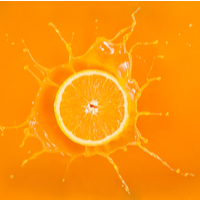
Orange Splash:
Explore High Diving Fruit And Physics

Rotten Banana:
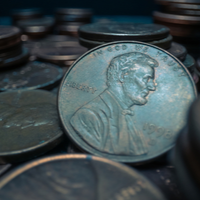
Dirty Pennies:
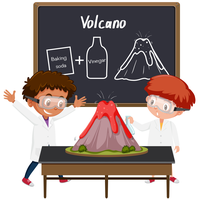
Baking Soda And Vinegar Volcano:
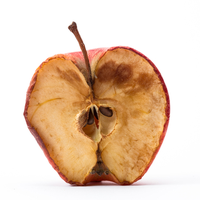
Apples And Lemons:
How Do You Like Them Apples?
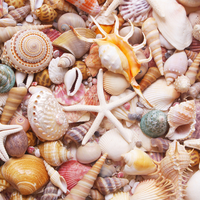
Smashing Seashells:

Foam At The Mouth:
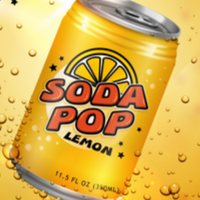
Lemon Science Soda:
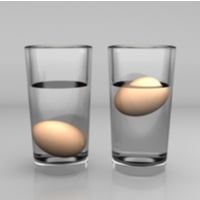
Can An Egg Float?:
Use Science To Float An Egg

Fat Food Test:
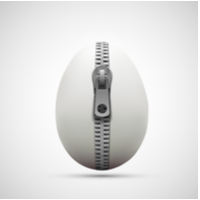
Secret Code On An Egg:
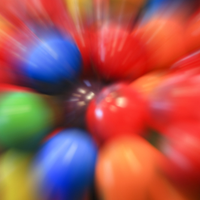
Sugar Rush:
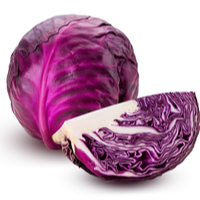
Red Cabbage Litmus Paper:
Make Litmus Paper In Your Kitchen

Lemon Electricity:
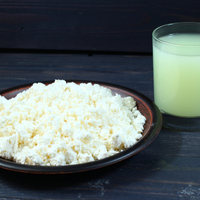
Create Curds And Whey:
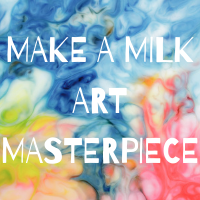
Panicked Pepper:
Watch Pepper Run Scared
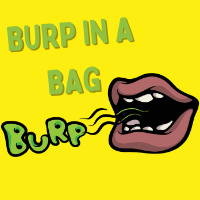
Burp In A Bag:
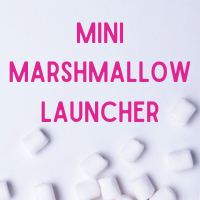
Mini Marshmallow Launcher:
See our latest activities and ideas first!

30+ Kitchen Science Experiments for Kids

These Easy Kitchen Science Experiments are so much fun! Showing your preschooler or kindergarten-aged child that hands-on learning can be done easily at home and it opens up their mind to critical thinking and experimental processes.
If you have older children don’t worry because these kitchen chemistry reactions are just as good for your teens.
Easy Science Experiments
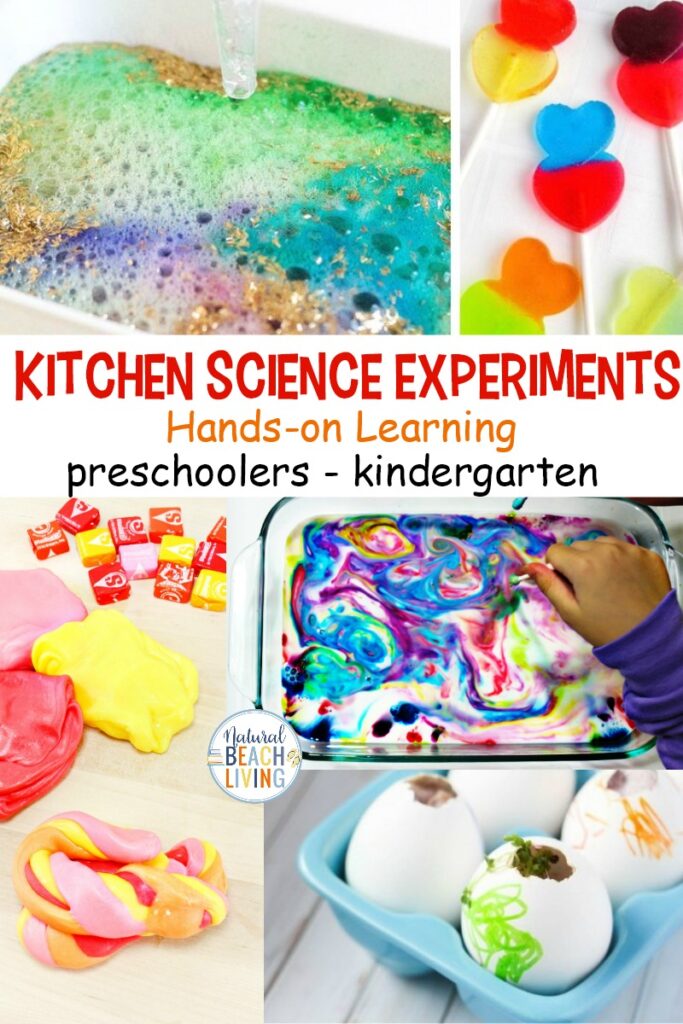
Kitchen Science Experiments
Who says that you can’t create a learning environment at home? These simple and age-appropriate experiments show your child that learning is so much fun. Pull up a chair and get ready to dive right in with them. You won’t want to miss out on this fun!
Your child is certain to enjoy these homemade kitchen science experiments!
Kitchen Chemistry Reactions
Mixing Ingredients to get the desired result. All of your ingredients play an important role in getting a reaction. A kitchen chemical reaction can be a process in which one or more substances, the reactants, are converted to one or more different substances, the products.
Science Activities for Kids
Magic milk chemistry experiment.
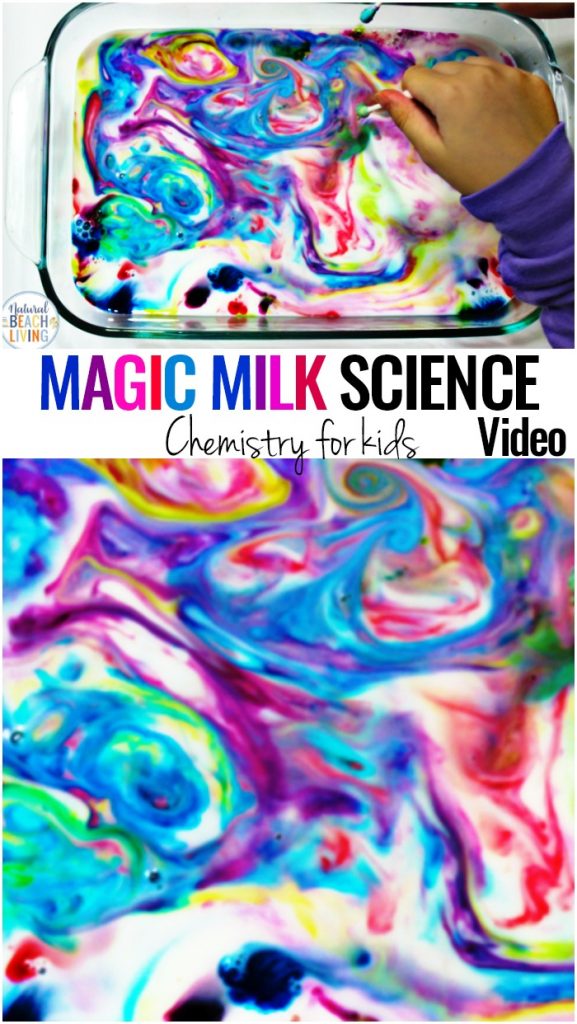
Ocean Activities for Preschoolers in Science
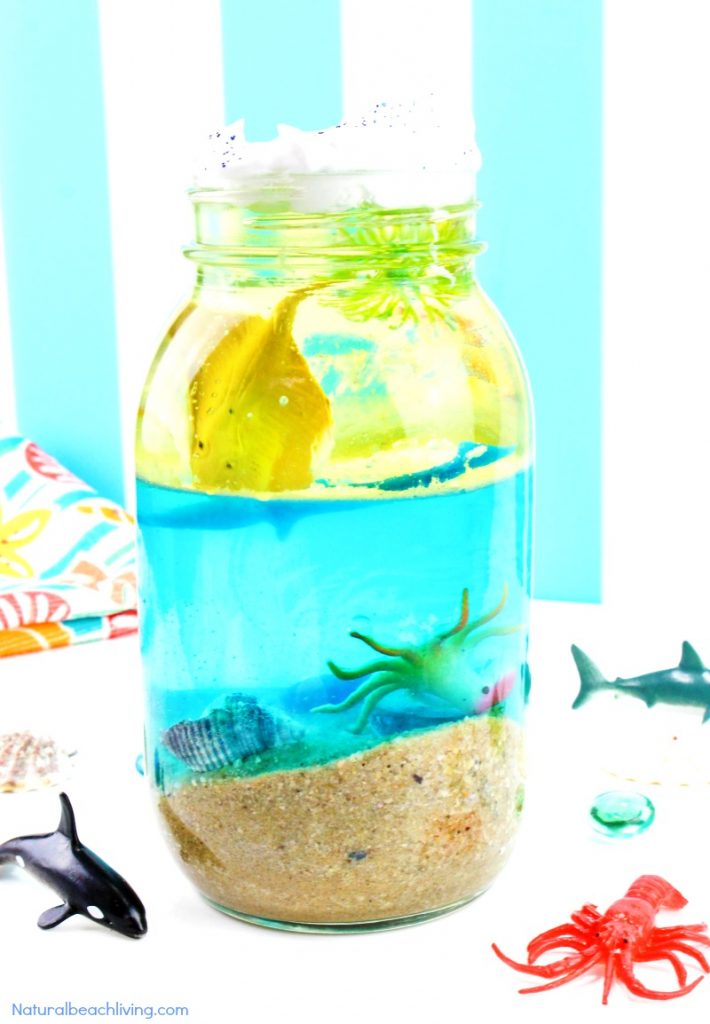
And if you love those fun experiments, don’t miss out on this one!
Edible Taffy Slime Recipe – Science
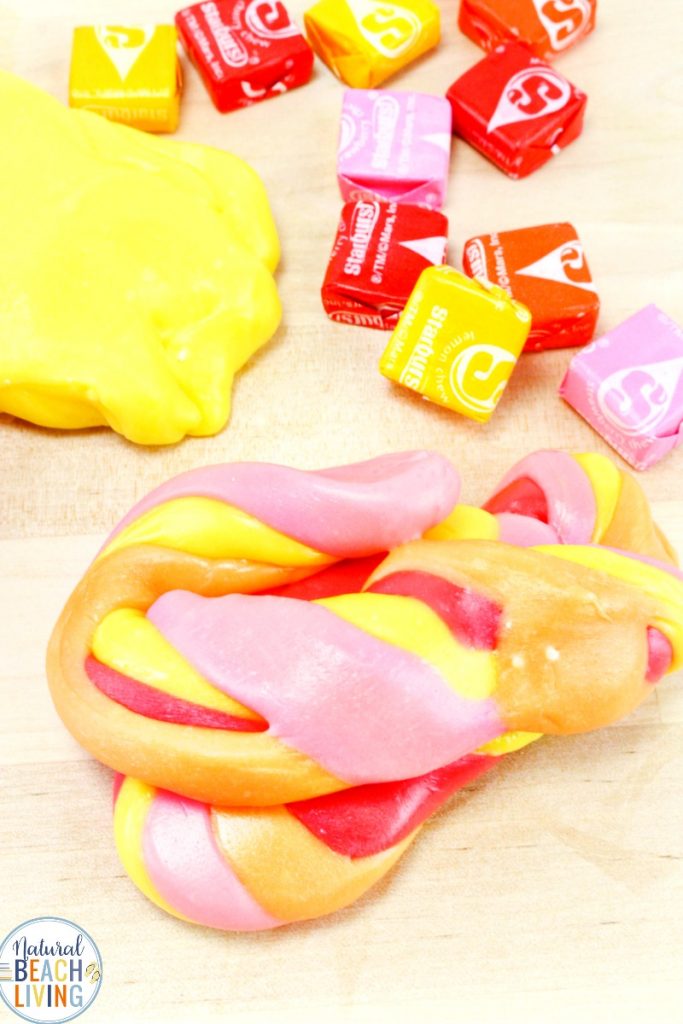
Watermelon Science Activities – Baking Soda and Vinegar Science Experiment
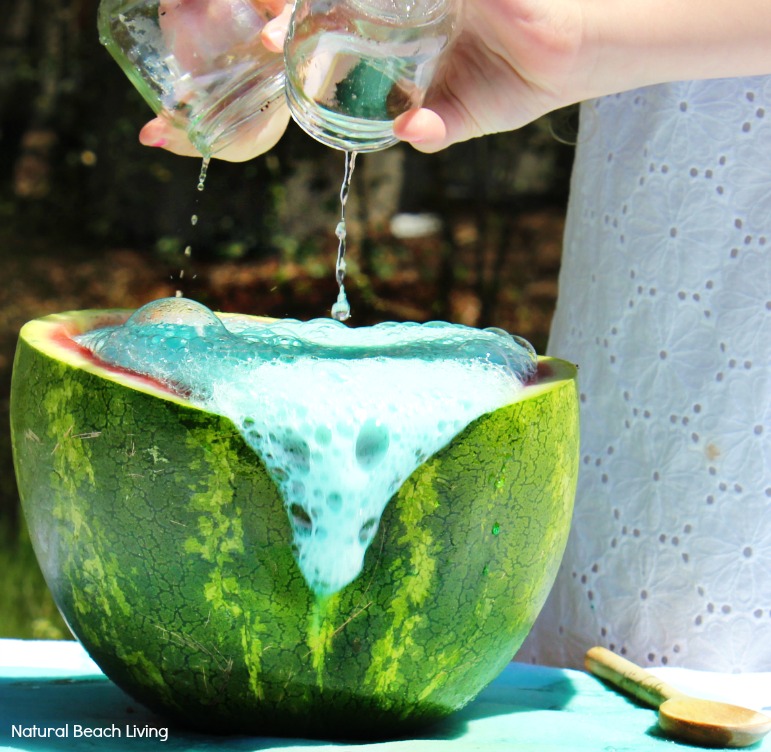
Have a leftover watermelon just sitting around? This is one science activity that is certain to yield big results!
affiliate links can be found on this blog at no cost to you.

Homemade Kitchen Science Experiments
Click on the links below for more Simple Science Experiments.
- Fizzing Colours! A Baking Soda And Vinegar Experiment For Kids from happyhooligans.ca
- Egg Planting Botany Experiment from sugarspiceandglitter.com
- How To Make Sherbet from laughingkidslearn.com
- Exploring The Density Of Liquids With Salt from buggyandbuddy.com
- Baked Potato Science Fair Project from leftbraincraftbrain.com
- Rubber Egg Science Experiment from coffeecupsandcrayons.com
- Fizzy Lemonade Science from simpleplayideas.com
- Paper Towel Chromatography Experiment To Do With Kids from rainydaymum.co.uk
- Hot Chocolate Surprise Science For Kids from fantasticfunandlearning.com
- Science Experiment: Ice, Water, Vapor from handsonaswegrow.com
- Valentine Kitchen STEAM Heart Lollipops from schoolingamonkey.com
- Dissect A Bean Seed Science For Kids from raisinglifelonglearners.com
- Celery Science Experiment For Kids from coffeecupsandcrayons.com
- Yeast Science Experiment For Kids from sugarspiceandglitter.com
- Glitter Science Experiment from lifeovercs.com
- Frozen Jello Sensory Play from theimaginationtree.com
- Egg Experiment Showing Mirror Illusion Magic Trick from igamemom.com
- Oobleck Dough from leftbraincraftbrain.com
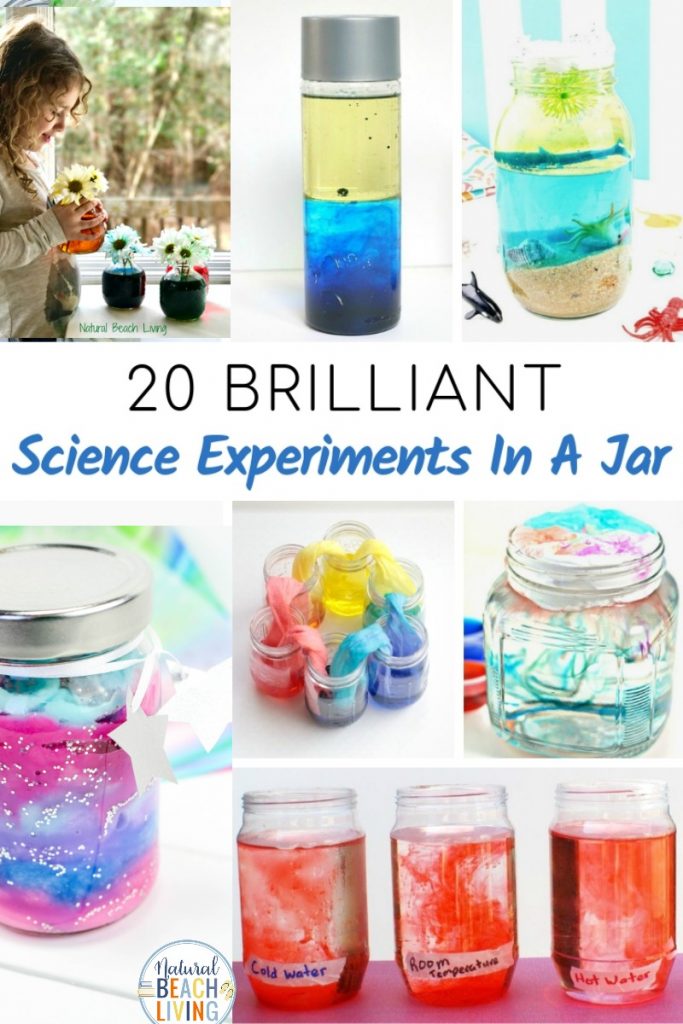
Very Simple Science Experiments
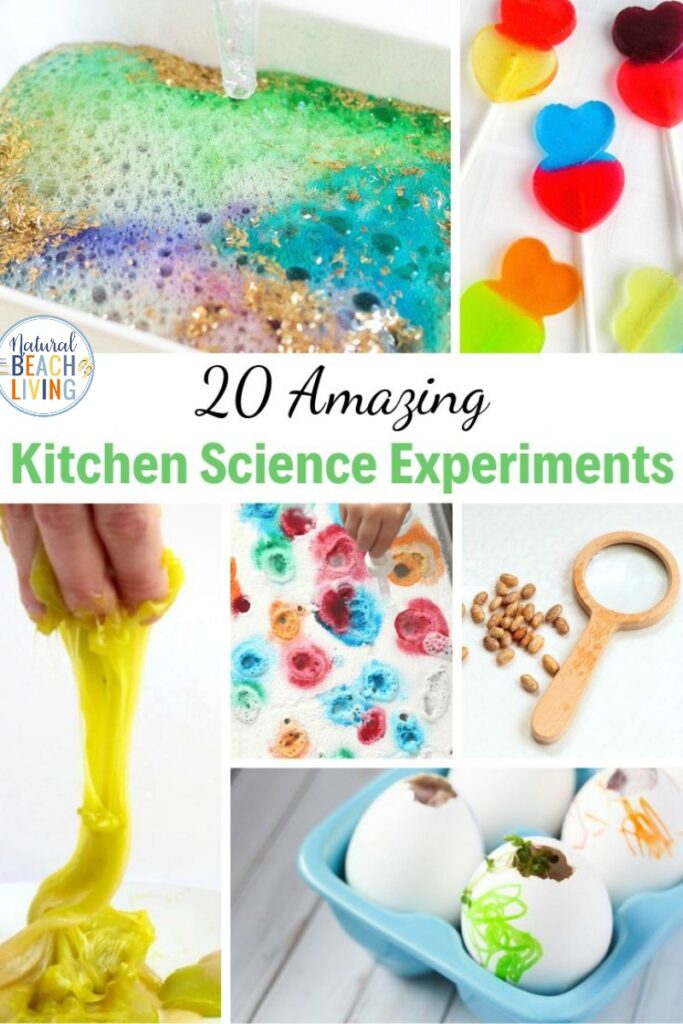
Montessori Science
Studies have shown that if you like this, you will also love the following articles. I have pulled them together for you right here:
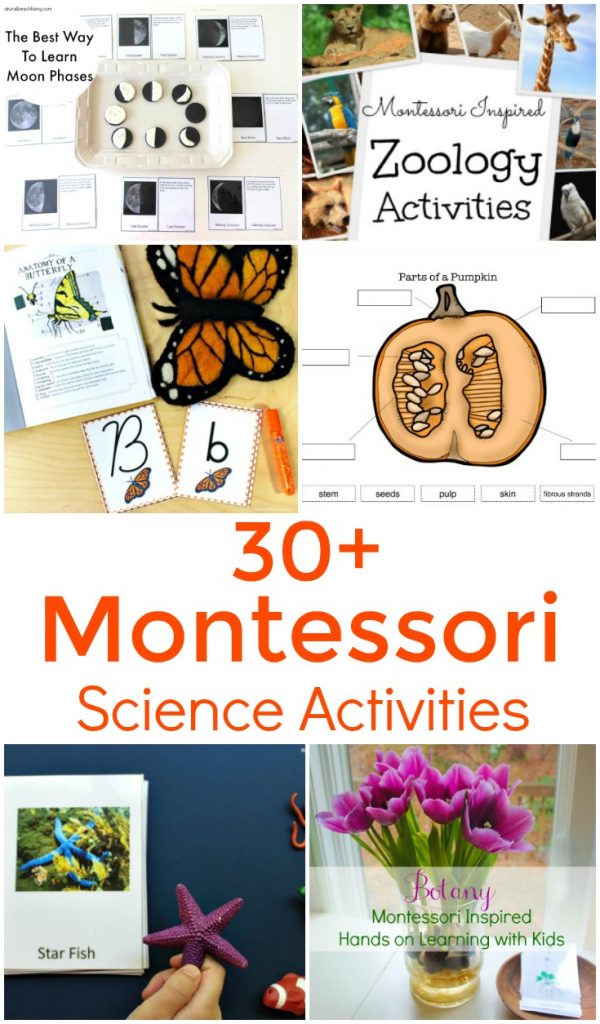
FOR THE BEST ACTIVITIES FOR KIDS FOLLOW US ON PINTEREST

IMAGES
COMMENTS
Sep 19, 2023 · 1. Rubber Egg Experiment. Materials: Egg; White vinegar; Glass or jar; Cover an egg in a container with vinegar to see the shell disappear and the resulting egg that feels like rubber.
Mar 11, 2021 · The creative opportunities with this collection of kitchen science experiments are endless! The best thing about science in the kitchen is that you probably already have everything you need! Kitchen Science Experiments for Kids Egg Experiments. There are so many different things you can do with eggs.
Your kitchen is a great place to conduct a few safe and fun experiments with your kiddos. Simple ingredients that you already have in your kitchen cabinets, like vinegar, baking soda, food coloring, and sugar, allow you to recreate dozens of different experiments at home.
Sep 2, 2019 · You can explore the fun of science in your own kitchen. Here are some science experiments and projects you can do that use common kitchen chemicals. Click through the images for a collection of easy kitchen science experiments, along with a list of the ingredients you will need for each project.
Feb 13, 2022 · Turning whipping cream into butter and ice cream are two of the tastiest science experiments you can do at home! Candy. No kid will turn down this Skittles science experiment or watching the Growing Gummy Bear experiment! More Kitchen Science Experiments. Here are a few of our favorite books for more fun science experiments you can do at home:
Try these simple, fun, and frugal kitchen science experiments with your kids! Each experiment requires common kitchen ingredients, recyclables, and/or kitchen scraps that were going into the trash anyway. These fantastic STEM activities are wonderful to use as science fair projects or in classroom science centers.
Kitchen Science Experiments. Easy kitchen science experiments you can do at home! Click on the experiment image or the view experiment link below for each experiment on this page to see the materials needed and procedure. Have fun trying these experiments at home or use them for SCIENCE FAIR PROJECT IDEAS.
These jaw-dropping kitchen science experiments will wow kids from preschool on up! A collection of more than 20 experiments to do at home or at school.
Jan 3, 2023 · Well, kitchen science experiments can totally make that possible! There are so many incredible ways to explore science concepts, including a few that you can experience right in your own kitchen . As a homeschool mom of 5 boys, I've enjoyed SO many super cool science projects at home (especially in our kitchen).
These Kitchen Science Experiments are a great and fun way to encourage learning in your children. From Toddlers to Teens have fun creating Very Simple Science Experiments at home! Kitchen chemistry reactions and homemade kitchen science experiments for kids, Find The Best Science Activities for Kids Here!